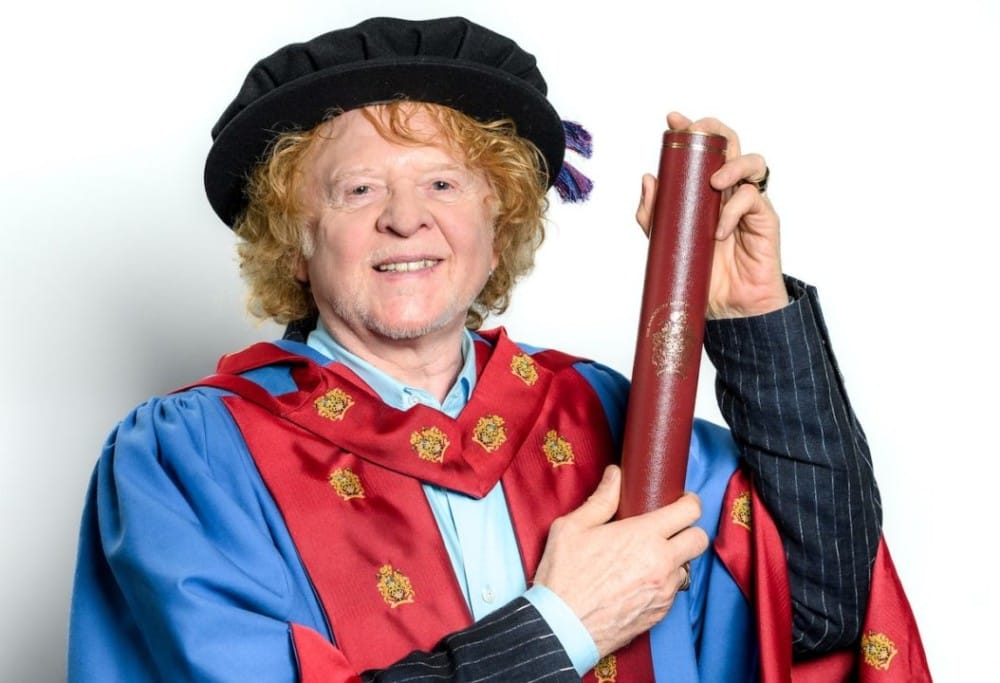
Mick Hucknall awarded honorary degree for contribution to music

Razorlight reunite for new album, Planet Nowhere

After reuniting for live shows in 2021, the classic Razorlight line-up of Johnny Borrell (vocals/guitar), Björn Ågren (guitar), Carl Dalemo (bass) and Andy Burrows (drums), will release a new album, Planet Nowhere, on 25 October, their first together since 2008.
At the forefront of the indie-rock resurgence of the early 2000s, the band scored three Top 5 albums, nine Platinum album certifications and an NME Award. With hits such as Golden Touch, Somewhere Else, In The Morning, America and Wire To Wire, the collective successfully crossed over to the mainstream and amassed a huge fanbase.
Since reuniting, Razorlight have sold-out a headline tour which included a London show at the Eventim Apollo, and played shows as guests to Muse, Kaiser Chiefs and James. But as the ever ambitious Johnny challenged himself, “Who wants to be a greatest hits band?” So he hatched a plan, and late in 2023 booked a five-day session with the legendary producer Youth (The Verve, James) at his Space Mountain studio in Spain. Youth knew what they had to achieve, telling the band, “Razorlight’s quite simple isn’t it? Just a driving bassline, driving drums and a story.”
Razorlight preview the new set by sharing its first single, Scared Of Nothing. Listen below:
Heading
For whatever reason, things weren’t that simple. After four days they had a stack of ideas, but nothing really worth pursuing. And then, as Johnny recalls, something remarkable emerged from out of nowhere.“I’d been down in the barranca, and came back up to find the studio empty. So I picked up this weird six-string bass/guitar hybrid I’d never seen before and wrote this thing. On our last night, I started playing it with the guys. The drums came in hard, the bass pounded. It sounded like shit. Absolute shit.
“But Youth was there, saying ‘Can, Velvets, see where it takes you’ and ‘Why don’t you try it like that?’ But still the track just wouldn’t budge, locked in its own inertia. Youth says, ‘You’re getting there, just one more’ and almost instantly the song came out, from nothing to something, like a statue coming up out of marble.”
That song was Scared of Nothing and listening back to the finished track, it’s easy to see why it resparked Razorlight’s mojo.
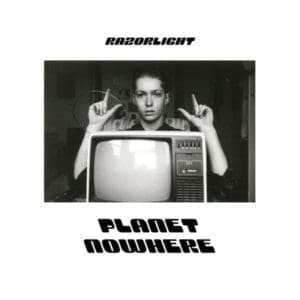
Planet Nowhere Tracklist
Zombie Love
U Can Call Me
Taylor Swift = US Soft Propaganda
Dirty Luck
Scared of Nothing
F.O.B.F.
Empire Service
Cyclops
Cool People
April Ends’
In other Razorlight news, the band has announce details of an intimate underplay tour in October, which consists of the smallest shows that the band have played in years.
Fans who pre-order Planet Nowhere from their official store here will receive access to a pre-sale for tour tickets. The pre-sale opens at 9am on 1 August and will remain live until remaining tickets go on general sale from 9am on 2 August.
October – Underplay Tour
18 – Birmingham, Castle & Falcon
19 – Edinburgh, Mash House
20 – Leeds, Brudenell Social Club
21 – Manchester, Band on the Wall
22 – Brighton, Komedia
24 – Bristol, Strange Brew
November
21 – London, O2 Academy Brixton (with special guests Mystery Jets)
For further information click here
Save and subscribe with Classic Pop magazine here
The post Razorlight reunite for new album, Planet Nowhere appeared first on Classic Pop Magazine.
... Continue Reading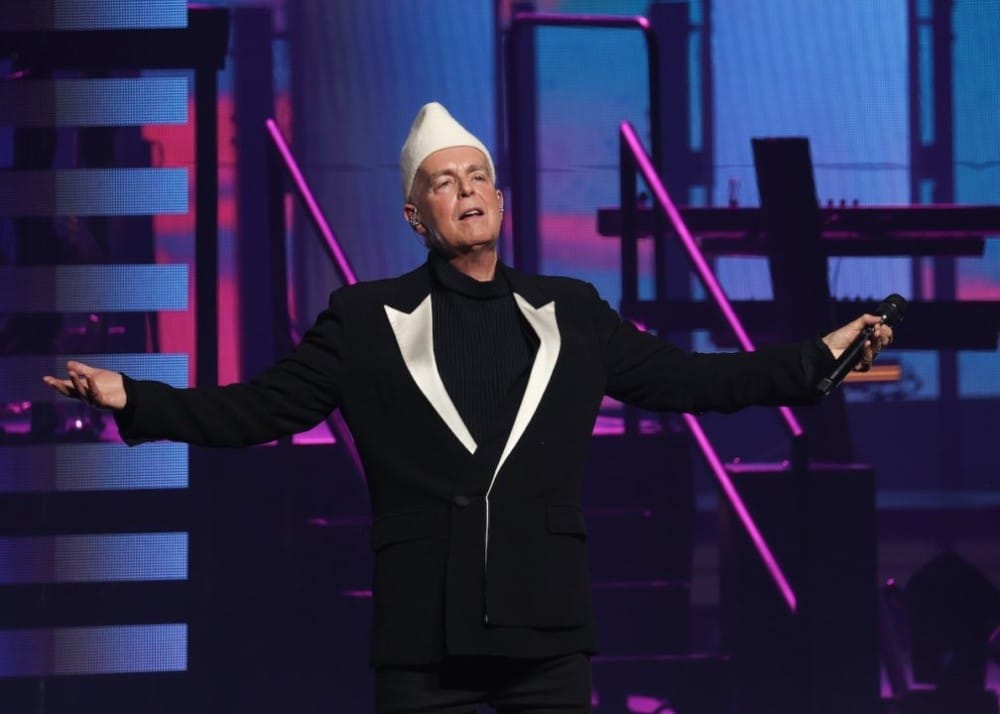
ONLINE EXCLUSIVE: Live review – Pet Shop Boys at London’s Royal Opera House

Pet Shop Boys live at London’s Royal Opera House 23 July 2024
Rating: 5/5
Since they became the first electronic artists to play London’s Royal Opera House in 2016, Pet Shop Boys are now semi-regulars at the capital’s swankiest venue.
Bringing their Dreamworld performance to the home of opera feels like a coronation for their hits show: two years since it began – and four years since it was first announced pre-lockdown – Neil Tennant and Chris Lowe have honed it to perfection, ready for it to bow out in Britain at Radio 2 In The Park in September.
The duo have explained how working with Stuart Price on distilling their 40 years into two hours, rearranging their hits into their sleekest, most crowd-friendly versions, was largely crafted in order to stop anyone from being, well, bored. Going to the bar during a show was not a Pet Shop Boys trait. Tennant might have joked earlier this year that fans still went to the bar during You Only Tell Me You Love Me When You’re Drunk, but it’s significant that it has since been dropped to help accommodate three song from Nonetheless.
In Dreams
The Dreamworld concert is now so perfectly achieved that it’s essentially become pop’s fully live version of ABBA’s Voyage, except that Tennant and Lowe put the hours in. They’re pretty relentless tourers these days and you can’t really moan you haven’t had chance to see Dreamworld by now.
It means it’s the hardcore fans who are at the Opera House: rather than the arenas and festivals which have generally hosted Dreamworld, the hall only holds 2,250 fans. The five-night run for Pet Shop Boys’ third Opera House residency is one for the connoisseurs, who just maybe felt the arenas held a few casual fans who only really knew half-a-dozen songs.
Certainly, Tuesday’s opening night was full of the truly committed. As with previous PSB x ROH concerts, there was no concession to changing up the show itself – pop music is as vital to the soul as opera, so we’ll be in charge for the duration, thanks.
A Well-Honed Performance
Given that the show was effectively a regular Dreamworld night in front of fans who’d almost certainly witnessed it before, it was a well-honed audience as much as a well-honed performance. Telling his regular tale about how Domino Dancing was written, Tennant interrupted it to admit: “These people down the front have seen this show about 50 times, they know this story.”
While there have been intimate Dreamworld shows in London at the Electric Ballroom, 229 and Koko clubs, none are quite so refined as the Opera House: it’s the perfect surroundings because, once you’re inside and past any preconceptions about what “opera” entails, the venue is a gorgeous theatre, perfect for the tale of A New Bohemia’s Petit Bonbons.
The intimacy allowed Dreamworld’s intricacies to come alive: how Lowe’s keyboard stabs in It’s A Sin are perfectly matched to the sun’s flares on the big screen; the way the pedestrians moving in the film for I Don’t Know What You Want But I Can’t Give It Any More perfectly sync with the song’s intro; the purple lights that cover the band in Love Comes Quickly shimmering just so in the mix.
Our heroes’ interaction is beautiful up close too, from Lowe being too absorbed in keeping New York City going to acknowledge Tennant when he joins the keyboard podium to Lowe holding the mic with surprising theatricality in his show-stealing Paninaro, the absolute tart.
The Best Pop Has To Offer
At this distance, you can really judge how live it is: is Tennant’s voice maybe a tiny bit hoarse in Rent’s first verse? If so, it only contrasts with how he too is now perfectly honed after so long as a road warrior. His grand gestures aren’t necessary here, but they still work. The second Tennant waves his arms in Where The Streets Have No Name, everyone else’s arms are immediately aloft.
The small stage means the dozen silver dancers in the euphoric final third barely fit on, in danger of bundling into each other, though they too are of course perfectly in sync.
The impact of other big gestures hit home with extra force. To an audience who know its significance, the film of a seemingly utopian San Francisco accompanying Go West is heartbreaking. The pre-encore roar from the audience isn’t so much “One more song!” as “We know which two songs are coming, and we’re absolutely going to lose our minds.” And we do.
At the end of Being Boring, Neil Tennant states: “After 40 years, we are still the Pet Shop Boys.” Goddam right. After 40 years, they’re still the best pop has to offer. As Vocal and It’s Alright had shown, this is what House music is all about.
Setlist
Suburbia
Can You Forgive Her?
Opportunities (Let’s Make Lots of Money)
Where the Streets Have No Name (I Can’t Take My Eyes Off You)
Rent
I Don’t Know What You Want But I Can’t Give It Any More
So Hard
Left to My Own Devices
Single-Bilingual / Se a vida é (That’s The Way Life Is)
Domino Dancing
Dancing Star
New York City Boy
New Bohemia
Jealousy
Loneliness
Love Comes Quickly
Paninaro
Always on My Mind
Dreamland
Heart
What Have I Done to Deserve This?
It’s Alright
Vocal
Go West
It’s A Sin
Encore
West End Girls
Being Boring
For tickets and tour dates click here
Want more PSB? Order Classic Pop Presents: Pet Shop Boys Volume 2 here
Read More: Complete Guide To Pet Shop Boys albums
The post ONLINE EXCLUSIVE: Live review – Pet Shop Boys at London’s Royal Opera House appeared first on Classic Pop Magazine.
... Continue Reading
ONLINE EXCLUSIVE: Live review – Pet Shop Boys at London Royal Opera House
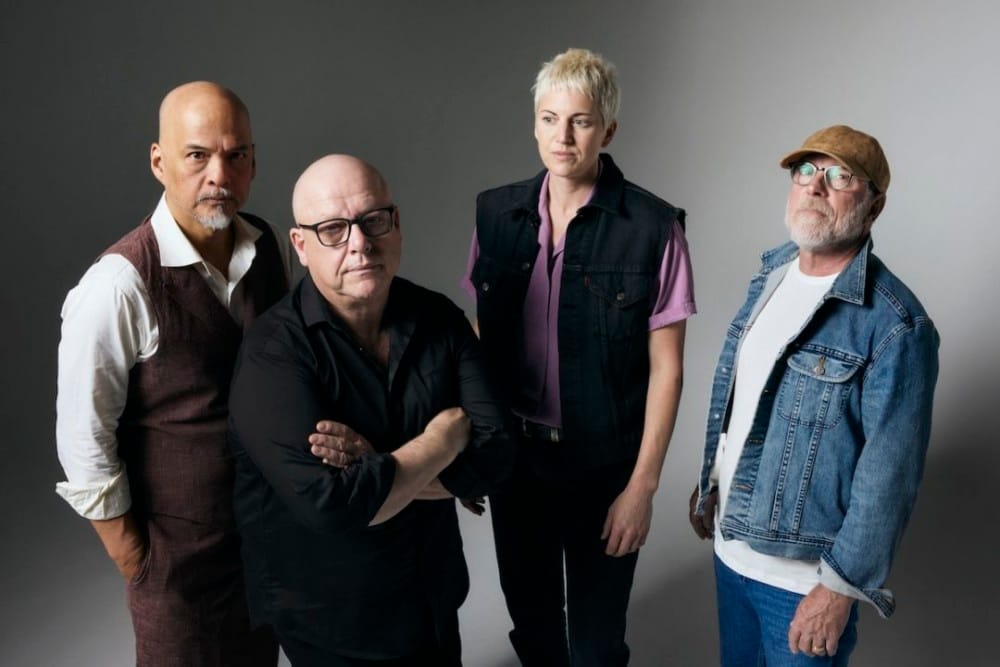
Pixies announce new album The Night The Zombies Came

Pixies are set to release their new studio album, The Night The Zombies Came, on 25 October.
It has been 35 years since their groundbreaking Platinum-certified album Doolittle catapulted the band into the UK Top 10, and 20 years since their celebrated reformation at Coachella, Pixies are deep into their second act, and in the midst of a creative purple patch.
Due for release in time for Halloween, it’s the Pixies’ tenth album, if you count their classic 1987 4AD mini LP Come On Pilgrim, and first new music since 2022’s acclaimed Doggerel LP.
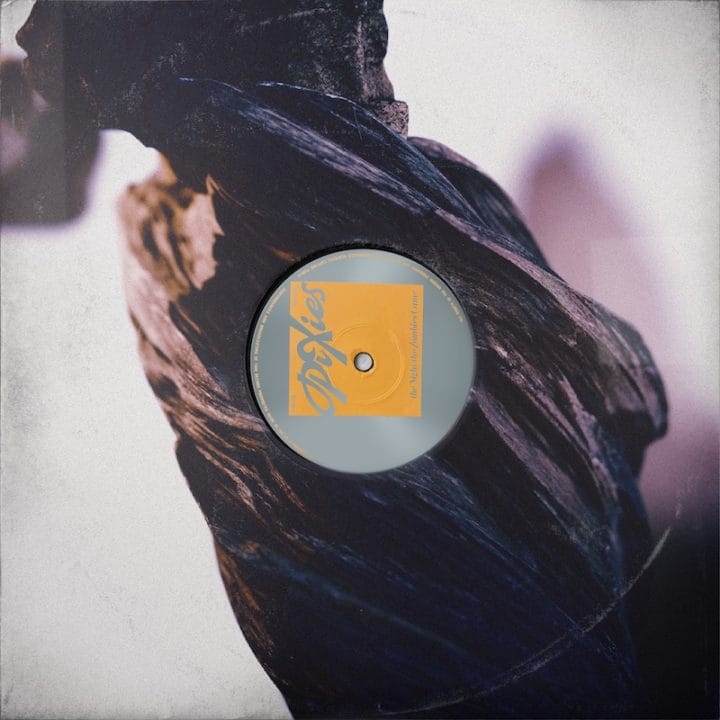
Planet Of Sound
Featuring 13 new songs, it promises to be the most cinematic record of their career. Songwriter, vocalist and guitarist Black Francis explains: “Fragments that are related and juxtaposed with other fragments in other songs. And in a collection of songs in a so-called LP, you end up making a kind of movie.”
Druidism, apocalyptic shopping malls, mediaeval themed restaurants, 12th century poetic form, surf rock, gargoyles, bog people, and the distinctive dry drum sound of 1970s era Fleetwood Mac are just some of the disparate wonders that inform the new songs.
Testament to this kaleidoscopic vista is the new song Chicken. Listen below:
The Night The Zombies Came Tracklisting
1 Primrose
2 You’re So Impatient
3 Jane (The Night the Zombies Came)
4 Chicken
5 Hypnotised
6 Johnny Good Man
7 Motoroller
8 I Hear You Mary
9 Oyster Beds
10 Mercy Me
11 Ernest Evans
12 Kings of the Prairie
13 The Vegas Suite
Early on in the recording process at Guilford Sound studio in Vermont, the band noticed the new songs were dividing into two camps: what they came to call the “Dust Bowl Songs” – country-tinged, ballad-esque numbers such as Primrose and Mercy Me, and on the other side, the album’s furious punk numbers such as You’re So Impatient and Oyster Beds. Only Jane (The Night the Zombies Came) keeps its feet in both camps — reminiscent of early 60s Phil Spector, the band hitting the sweet spot between mushy and abrasive, it’s a track that Black Francis allegedly likened to being chased by a swarm of bees.
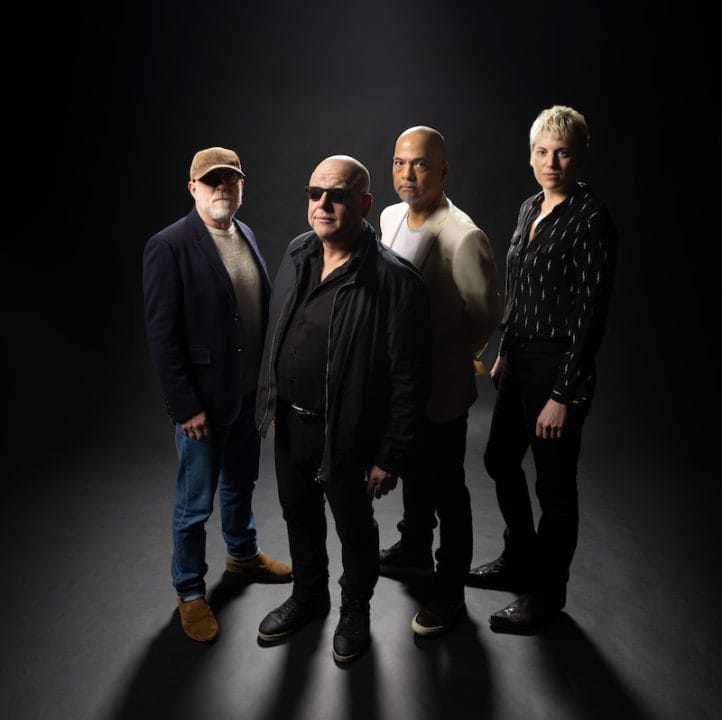
loudQUIETloud
For the new album recording sessions the band returned to work with producer Tom Dalgety, who drummer David Lovering refers to as “a fifth Pixie” after producing 2016’s Head Carrier, 2019’s Beneath The Eyrie and 2022’s Doggerel.
The Night The Zombies Came sessions also saw Pixies welcoming new bass player Emma Richardson (Band Of Skulls) to the line up; the first British band member to join the group. There’s also an expanded role for guitarist Joey Santiago. After contributing his first-ever Pixies lyrics on Doggerel, for the new record Santiago wrote the words to Hypnotised by completing a complex lyrical riddle of sorts, known as a sestina.
To pre-order the album click here
Save and subscribe with Classic Pop magazine here
The post Pixies announce new album The Night The Zombies Came appeared first on Classic Pop Magazine.
... Continue Reading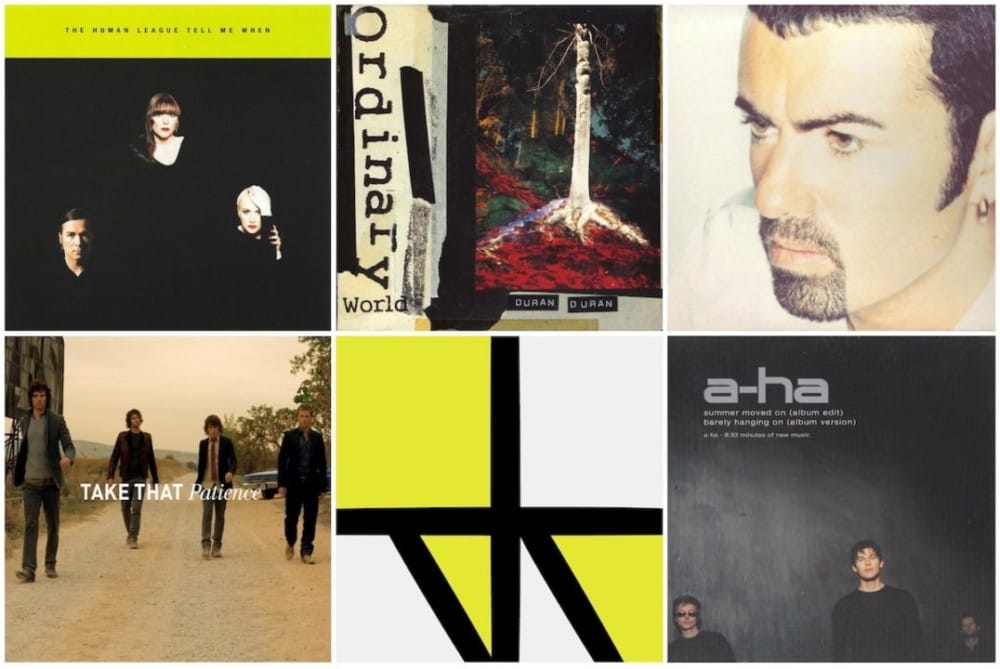
Top 20 Comeback Singles

Top 20 Comeback Singles: Great comebacks aren’t just reserved for sporting heroes, they’re also the stuff of legend in the pop music world…
Music history reveals that even the most popular and revered of acts endured a period of commercial decline before getting their careers back on track, and there are plenty of examples of a return to form in our latest countdown.
Additionally, we’ve focused on acts who returned after a lengthy break, as well as those who successfully overcame tragedy or a change in personnel. Many readers will correctly observe that some of the artists and bands in our list never went away, but it’s fair to say that some of these acts’ careers had creatively and commercially stagnated, before they bounced back with a special record that rekindled their fortunes…

2O GARY NUMAN – A QUESTION OF FAITH (1994)
Gary Numan’s career hit rock bottom in 1992 with Machine + Soul, an LP of pop-funk workouts that tested the patience of even devoted Numanoids. His fortunes changed after fan and future wife Gemma O’Neill encouraged a direction change. Inspired by Depeche Mode’s Songs Of Faith And Devotion, he adopted a more industrial sound. Numan then emerged with Sacrifice, its dark soundscapes typified by lead single A Question Of Faith. Though not a hit, it marked the beginning of his renaissance.

19 SPARKS – WHEN DO I GET TO SING ‘MY WAY’? (1994)
The charts weren’t big enough for Ron and Russell Mael in the 80s, and after a slew of identikit synth-pop releases failed to connect with the MTV generation, their fortunes declined further when director Tim Burton passed on their musical adaptation of manga series Mai, The Psychic Girl. Embracing contemporary dance, they came back fighting with the European hit When Do I Get To Sing ‘My Way’?, which ruminated on their fading star with customary Sparks wit. Thirty years on, they’re still doing it their way.
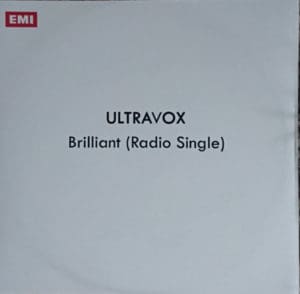
18 ULTRAVOX – BRILL!ANT (2012)
Having rekindled the magic while on the Return To Eden Tour, the members of Ultravox holed up in Midge Ure’s Montreal cabin to secretly record a new album, their first as a quartet since 1984’s Lament. While the resulting Brill!ant album didn’t quite live up to its name, it did include one classic in its digital-only single title track. Ure explained to Stereoboard it was a “bittersweet comment on pop culture. It’s about the other side of fame and success… the bright young things that ignore the consequences of fame.”
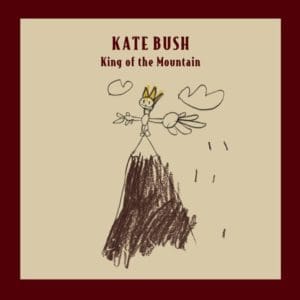
17 KATE BUSH – KING OF THE MOUNTAIN (2005)
Prioritising motherhood and domestic solitude over the release of new material, Kate Bush evaded public attention for over a decade following 1993’s The Red Shoes, before returning with ambitious double album Aerial. Replete with vocal slurs that mimicked Elvis, her typically quirky comeback meditated on the King’s stardom, and playfully pondered the possibility of him riding Citizen Kane’s sled in some snow-capped utopia. A Top 10 hit, it included a take on Marvin Gaye’s Sexual Healing on the B-side.
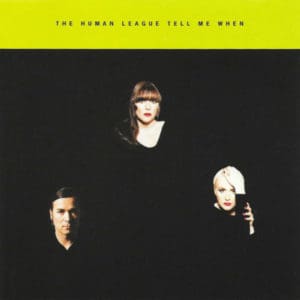
16 THE HUMAN LEAGUE – TELL ME WHEN (1994)
The League were devastated after being dropped by Virgin in 1992, although Philip Oakey conceded they’d lost their way, telling Billboard: “We went in some silly directions after Dare, trying to bring in acoustic instruments and trying to make white soul music.” A trip to Japan to work with the famed Yellow Magic Orchestra restored their confidence, and after signing to East West, Tell Me When gave them their biggest hit since 1986’s Human, while the success of parent LP Octopus gave them the platform to tour for the first time in eight years.
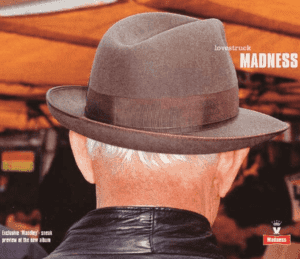
15 MADNESS – LOVESTRUCK (1999)
Following the successful re-release of It Must Be Love and the Divine Madness retrospective, the classic Nutty Boys line-up reformed for the legendary Madstock! shows in 1992. Bored of playing the hits on subsequent tours, they reunited with producers Clive Langer and Alan Winstanley to record the Wonderful LP. Detailing a drunken night out, in which the sloshed and melancholy protagonist ends up pouring his heart out to a lamppost, lead single Lovestruck staggered into the Top 10, their biggest self-penned UK hit since 1983’s The Sun And The Rain.
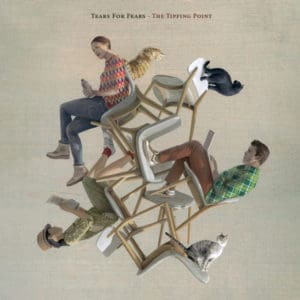
14 TEARS FOR FEARS – THE TIPPING POINT (2021)
Ostensibly favouring the lucrative live circuit, Tears For Fears weren’t in a hurry to record a follow-up to 2004’s reunion album Everybody Loves A Happy Ending, and they almost split for good following a largely fruitless attempt to work with contemporary hitmakers. In the end they went back to basics, channelling personal experience into their songs, with Please Be Happy and the title track of their extraordinary comeback album The Tipping Point rooted in Roland Orzabal’s pain of watching his late wife’s health deteriorate.

13 NEW ORDER – RESTLESS (2015)
Rallying in the wake of Peter Hook’s acrimonious departure, New Order recorded the guest-packed Music Complete, their first album in a decade, and arguably their finest since 1989’s Technique. Setting the standard was lead single Restless. “It’s an observation on how society has become consumerism driven,” Bernard Sumner told The Quietus. “How we are sold things through television, how we are sold things directly into our homes, how we are sold directly into our half-asleep brains, how it’s rammed down our throats.”

12 DAVID BOWIE – WHERE ARE WE NOW? (2013)
Presumed retired since a heart attack had curtailed his A Reality Tour in 2004, it came as a shock when this dropped on the lesser spotted chameleon’s 66th birthday. Somehow, he’d recorded comeback album The Next Day in secret with long-time collaborator Tony Visconti, evading the rumour mill and the invasive clutches of social media. A reflective ballad with nostalgic snapshots of the Thin White Duke’s time in Berlin in the late 70s, Where Are We Now? was well worth the decade-long wait.
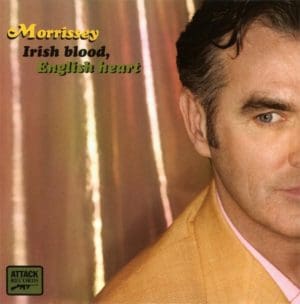
11 MORRISSEY – IRISH BLOOD, ENGLISH HEART (2004)
Following 1997’s failed album Maladjusted, Morrissey holed himself up in La La Land, only leaving home to road-test new material. He returned in 2004, brandishing a Tommy gun on the sleeve of hit-packed album You Are The Quarry. A celebration of his Anglo-Irish heritage, incendiary lead single Irish Blood, English Heart also saw Moz taking aim at British politicians and a monarchy he claimed still “salute” Oliver Cromwell, the man responsible for the brutal conquest of his motherland.
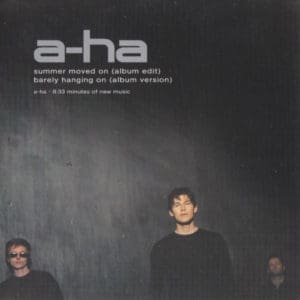
1O A-HA – SUMMER MOVED ON (2000)
With a-ha on hiatus since 1994, its members immersed themselves in various projects, until an invitation to the Nobel Peace Prize Concert in 1998 gave them the ideal opportunity to reform. Guitarist Pål Waaktaar-Savoy rose to the occasion by penning Summer Moved On, which doubled up as their comeback single. Notable for its orchestral sweeps and lyrics that touched upon their strained relationships, it was a huge European hit, while Morten Harket’s sustained note earned a spot in the record books.
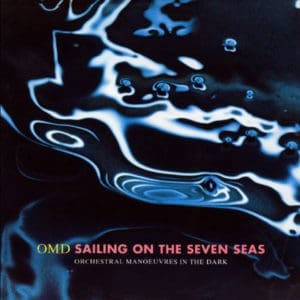
O9 OMD – SAILING ON THE SEVEN SEAS (1991)
Burned out after years chasing the American dream, the classic OMD line-up split in 1989, but frontman Andy McCluskey would later win the rights to the band name, leaving Paul Humphreys, Martin Cooper and Malcolm Holmes to record as The Listening Pool. Writing with local musicians Stuart Kershaw and Lloyd Massett, McCluskey returned with the hit Sugar Tax, preceded by Sailing On The Seven Seas, whose glam drums, Casio keyboard solo and earworm chorus gave OMD their biggest UK hit since 1984.
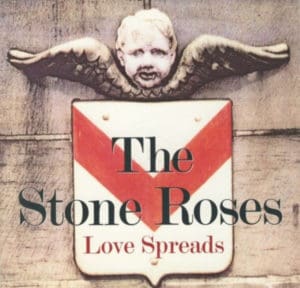
O8 THE STONE ROSES – LOVE SPREADS (1994)
Having not released new music for over four years, anticipation had reached fever pitch by the time The Stone Roses unveiled Second Coming in December 1994, by which time the musical landscape had significantly altered in the wake of grunge and Britpop. A dirtier rock sound that leant heavily on Led Zeppelin and Hendrix surprised fans, but Love Spreads gave the Madchester favourites their biggest hit to date. “This is more how we want to sound,” Ian Brown told The Big Issue. “It’s much stronger and we sound like a proper live band.”
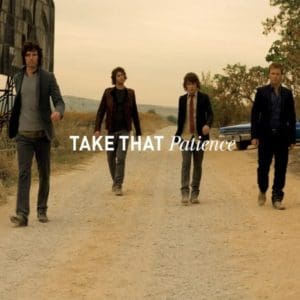
O7 TAKE THAT – PATIENCE (2006)
Following the airing of a new documentary, the greatest boy band of all time announced they were to reform – sans Robbie Williams – for a major tour, nearly a decade after hotlines were set up to help devastated teens deal with Take That’s split. Capitalising on their renewed popularity, the boys picked up where they’d left off with ninth chart-topper Patience. The well-crafted ballad later drew an unlikely champion in Manic Street Preachers bassist Nicky Wire, who boldly told The Guardian that it was “the greatest comeback single in history.”
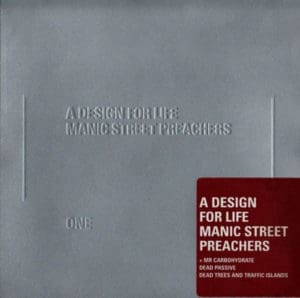
O6 MANIC STREET PREACHERS – A DESIGN FOR LIFE (1996)
After considering splitting up in the aftermath of Richey Edwards’ disappearance in 1995, the remaining Manics admirably resolved to finish the album they’d started with the talismanic guitarist. Boasting an opening line that had taken its inspiration from the stone inscription above the door of a Newport library, Nicky Wire wrote the lyrics for A Design For Life in response to what he perceived as “the patronisation of the working class”. It was to be a breakthrough single at UK No.2.
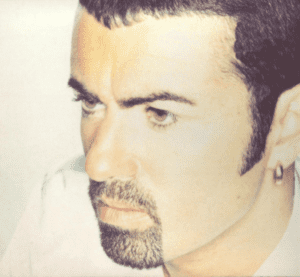
O5 GEORGE MICHAEL – JESUS TO A CHILD (1996)
Having extricated himself from his contract with Sony (who’d emerged victorious following a well-publicised court battle), George Michael returned to chart action after an absence of three years with this masterpiece, a tribute to former lover Anselmo Feleppa, who’d died from an AIDs-related brain haemorrhage in March 1993. The first of six hits to be lifted from comeback album Older, it was the singer’s first self-penned UK chart-topper since A Different Corner in 1986. George secretly donated all of the song’s royalties to Childline.
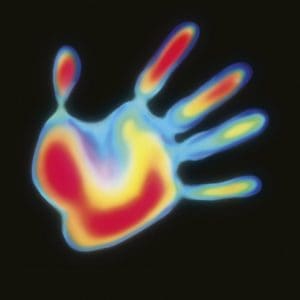
O4 ABBA – DON’T SHUT ME DOWN (2021)
Even a reported billion dollars couldn’t tempt the Swedish superstars out of retirement, so the announcement in 2021 that their ‘virtual’ residency at the ABBA Arena would be preceded by their first studio album in 40 years sent shockwaves across the globe. Purposely swerving contemporary chart sounds, Voyage recaptured the magic of yore, as evidenced by the simultaneously released singles I Still Have Faith In You and Don’t Shut Me Down, the former a moving, self-referencing ballad, the latter an Abba Gold-worthy nugget.

O3 ECHO & THE BUNNYMEN – NOTHING LASTS FOREVER (1997)
After Ian McCulloch’s departure and the tragic death of drummer Pete de Freitas, the remaining Bunnymen kept the name alive with new singer Noel Burke, before disbanding after flop album Reverberation. “Once me and Will Sergeant got back together,” McCulloch told The Guardian, “everything about daily life felt good again.” Following one album as Electrafixion, the pair reformed the Bunnymen, and unleashed an evergreen classic in Nothing Lasts Forever, whose anthemic qualities chimed with the Britpop crowd.
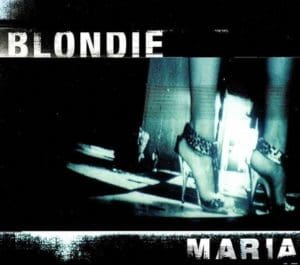
O2 BLONDIE – MARIA (1999)
Following the success of various remix projects and retrospectives, Blondie responded to an upsurge in popularity by reforming for a series of festival shows in 1997, but the legendary New Yorkers weren’t content to just tread the nostalgia circuit, they wanted to record a new album, their first since drug-addled flop The Hunter in 1982. Hooking up with original producer Craig Leon, they emerged with No Exit, which yielded an instant classic in Maria. Penned by keyboardist Jimmy Destri, it was a worldwide hit, and their sixth UK chart-topper.
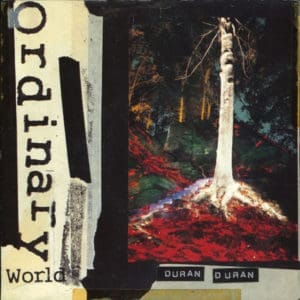
O1 DURAN DURAN – ORDINARY WORLD (1992)
By the turn of the 90s, Birmingham’s finest had steered the good ship Duran Duran through some stormy waters – the departures of Andy and Roger Taylor being two notable setbacks – and had continued to rack up the hits, with Notorious and I Don’t Want Your Love doing particularly well at home and across the pond. But by the time of the Liberty album, their creative well appeared to have dried up, and the Serious single became their first to miss the UK’s Top 40. Rather than allowing their career to mothball, they almost immediately began working on a new album at guitarist Warren Cuccurullo’s home studio.
By now Cuccurullo had become an official member of the band and a vital cog in the Duran machine, and his contributions would prove pivotal, not least on comeback single Ordinary World, which was characterised by his masterful solo. The second in a trilogy of songs that reflected on the death of one of Simon Le Bon’s closest childhood friends, the sophisticated ballad’s themes of loss and hope resonated with a worldwide audience, giving Duran one of their biggest hits, and a deserved Ivor Novello nomination.
The Wedding Album would also spawn further hits in Come Undone and Too Much Information, making 1993 one of the most successful years in their career. Just don’t mention what happened next…
Words Barry Page
If you enjoyed this article checkout our Top 20 Remix Albums
Save and subscribe with Classic Pop magazine here
The post Top 20 Comeback Singles appeared first on Classic Pop Magazine.
... Continue Reading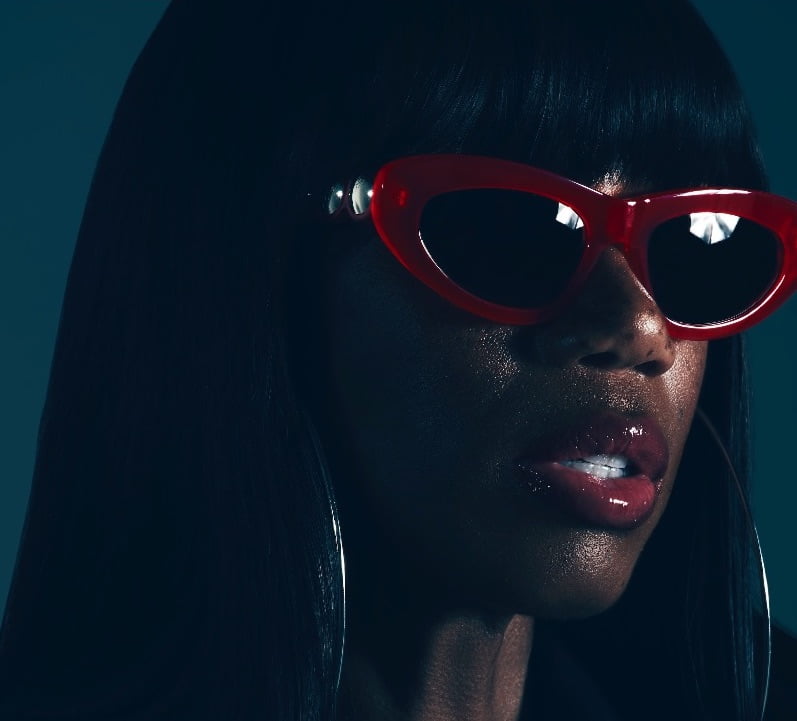
Shaznay Lewis – Pages interview

Twenty years on from her solo debut, Shaznay Lewis is back with belated sophomore album Pages. We spoke to her about going it alone and whether All Saints really are no more...
As the primary songwriter in All Saints, Shaznay Lewis was one of the defining artists of the late 90s. After the group split – for the first time – in 2001, the Islington-born singer-songwriter released her debut album, the No.22-charting Open, a kickstarter on a solo career that was soon to be paused when All Saints reunited in 2006.
Now, six years on from the seemingly final All Saints record, Shaznay’s back with Pages, a new 12-track album, boasting guest spots from, among others, Self-Esteem, Shola Ama and General Levy. “I do feel as though I’m starting again,” Lewis explains, “and making this record with some special people has been an exhilarating experience.”
It’s been 20 years since Open and six years since the last All Saints album, Testament. So why now?
I don’t really know. I never had any intention of doing my own project before. It literally all stemmed from one song I’d done. I’d done this session with Moyses Dos Santos and Charlie Stacey and by the end, I knew I loved the melody and really wanted to write something good to it. So I left it for a little while and then one day wrote a song over it, and that one track – Missiles – basically inspired me to go off and do my own project.
How would you describe the differences between Open and this latest solo album?
This record was definitely written without any sort of stress. If I think about how I felt when I wrote Open, I’d just come out of a band. Also, the label at the time had been taken over by EMI so I had no real point of contact in terms of A&R, as lots of people were leaving. I spent four years trying to put that record together.
I just wanted to keep going, but there were so many other factors which just made that situation be quite drawn out. So by the end of the four years, when I finally did release Open, I was quite frazzled. And by that point I felt a little bit… unsure. But with this, with Pages, you’re talking about 20 years later, so there’s a lot of growth there, there’s a lot of cemented understanding of what I do and how I do it.
How do you think you’ve matured as a songwriter in these past two decades?
It’s about not trying to conform and implement things that, as a songwriter, shouldn’t necessarily really matter. It was just about making sure I wrote a really good song, instead of thinking about anything else that sort of gets factored into being an artist.
You’ve worked with an impressive list of collaborators on the new album, some of whom started their careers, like you, in the 90s, and some who rose up more recently. Do you think that there’s a different work ethic for people of your generation?
I’d say so, definitely. I think working with people like Jez Ashurst, anybody that’s done production and writing from the 90s, we don’t do auto-tune, we will sing it again and again until we get it right. And we’re constantly looking for the better lyric or the better melody, as opposed to just kind of going, ‘OK, I’m clocking off at 6pm, so this will do’. It’s just an old-school way of working. When I go into a studio and I’m with people from my era, I feel instantly relaxed.
What kind of sounds did you want to bring to the new album and did you curate your listening to help inform the direction of the record?
From when I did Missiles, I knew how I wanted the whole record to sound. I knew I wanted it to be lush and for it to be smothered in strings and be quite soulful. If I came across certain tracks [on Spotify] that excited me, I made a playlist, which I called ‘Inspirational Songs’. They were all quite different, but there was something or another in each of them that I liked and wanted to use.
What’s the situation with All Saints now? Are you guys officially split up or simply on hiatus?
I’ve done the band thing for so long and a huge part of this journey has to do with writing. And when I say that, I mean I’ve been writing for 25 years for a band with that kind of hat on and being in that mindset. It’s a very specific thing. Some of that specific thing is quite limiting because when you’re writing for a girlband or boyband, it’s a certain formula and a certain way of doing things.
I just got to a point in my life and my career as a songwriter, where I just wanted to have different experiences – to write for film or a TV series, or a musical or whatever. Being within the confines of a band just wouldn’t allow my mind to go there.
I had to remove myself from the situation so that I could allow myself to have these other experiences and be daring enough to have them. So it’s not about hitting pause [on the band], it’s simply just about taking another road.
Early in your career with the band you said you felt happiest at home writing songs and that, because the others had all been to drama school, you felt least comfortable performing. Do you feel more confident now, going out there solo?
I do. My mind just feels a lot more clear, I don’t know why. I just feel more defined in my thinking. Before, I had a lot more, ‘I don’t knows’ and ‘can I do that?’ I felt like I needed to stay in the confines of being in a band, because I felt that that was all I was allowed to do, or it was okay for me to do.
It was 20 years between Open and Pages. Presumably we’re not going to have to wait until 2044 for album number three?
Who knows? [laughs]. At the moment I’m really in the middle of exploring different musical avenues. I’m just really excited about this album. I love it so much.
To order Shaznay Lewis’ Pages click here
Read more: Classic Pop’s Top 20 girl groups
The post Shaznay Lewis – Pages interview appeared first on Classic Pop Magazine.
... Continue Reading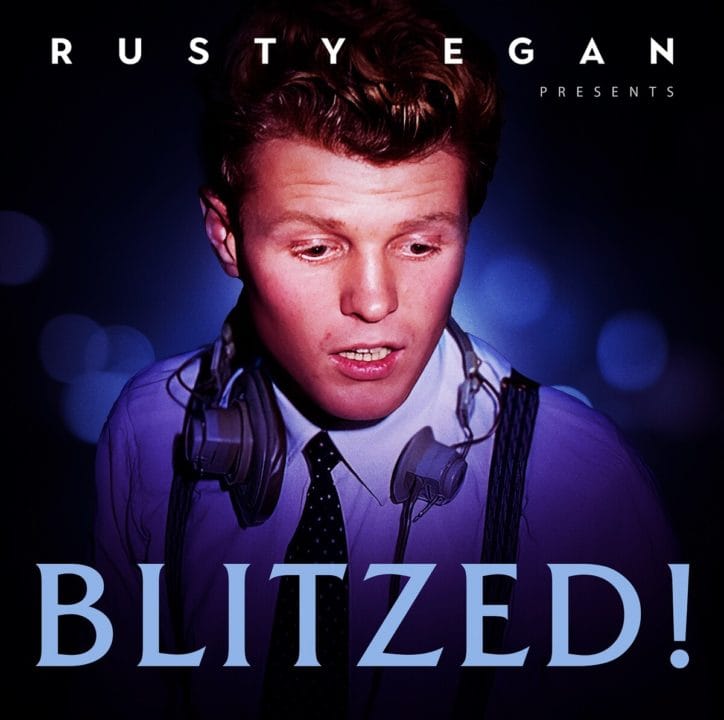
Inside Blitz – the club that birthed an 80s revolution

Long seen as the club that invented Britain’s cultural life in the 80s, Blitz was the epicentre of both music and fashion. So why was it created at a dodgy World War II−themed wine bar? Blitz DJ Rusty Egan, Boy George, Gary Kemp, Midge Ure, Philip Sallon and Sue Scadding delve into the madness of the iconic club that spawned the new romantic movement.
The 1980s were invented at the Blitz. Or so the popular image of one of Britain’s most outrageous, certainly outré, clubs in our cultural history would suggest. The New Romantic movement definitely started with Rusty Egan and Steve Strange’s hangout.
It’s taken a startlingly long time to celebrate it, but Rusty is now showcasing the music that started a revolution on a boxset, Rusty Egan Presents BLITZED!. However, the eclectic mix of glam, European electronic art, Krautrock, goth and, yes, a few synth-pop bangers shows how wide-ranging the Visage drummer was behind the decks. It also proves just how short-lived Blitz was in blowing people’s minds. By the start of 1981, Blitz was done.
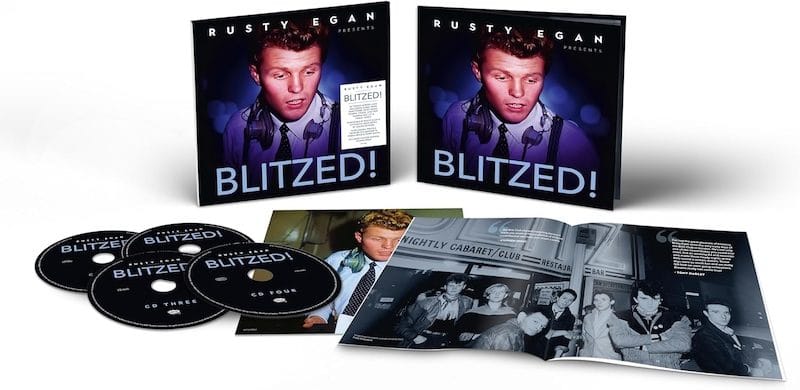
The Real Blitz
Rusty’s pleased to finally celebrate his legacy – and to hopefully shut people up about what he didn’t play. An ebullient, hyperactive talker, he admits: “Every day, people come up to me saying: ‘Hey Rusty, when are you doing a compilation?’ It’s a relief to get one out, after a lot of effort to get the rights. People who ask about a compilation then tell me: ‘Why don’t you put Don’t You Want Me and Tainted Love on there?’ Because they weren’t released when the Blitz was happening! Blitz was 1979-80. This isn’t Now That’s What I Call The Fucking 80s, it’s the real Blitz.”
If Rusty is occasionally frustrated at the myths around what he helped create, Gary Kemp is delighted one of Spandau Ballet’s biggest influences is finally being celebrated. “I wasn’t a ‘fan’ of Rusty as a DJ when I was going to the Blitz,” he considers. “It wasn’t that kind of fan relationship, because everyone going to the Blitz felt like we were a team. Of course, in hindsight I now know Rusty was so important.”
Future Of Music
Boy George was another admirer of what soundtracked his time working in Blitz’s cloakroom, enthusing: “I always found nightclubs ridiculous, but I loved dancing. Credit to Rusty, he always had great taste. So many of those songs had me running to the dancefloor dressed as a nun, with my Boudicca helmet falling from my head. I was drunk and in love with everyone, but most in love with Fad Gadget – the unsung king of electronic music.
“I think growing up in the 70s, we all just loved everything – pop, glam, rock, reggae, electronic, even classical. If Steve and Rusty were coppers, Rusty would be the nice cop. Steve was often on a power trip and loved turning people away. He loved lording it on the door. He turned away Mick Jagger, which I was appalled by. Going to the Blitz was always exciting – a drunken backcombed bitch fest. Steve never turned Philip Sallon away, though. Ever. He wouldn’t dare. Philip was the mother of all freaks. Still is really.”
George’s vivid portrait of his typical look for the Blitz highlights the club’s other storied legacy. What Rusty Egan was doing for showing the future of music, Steve Strange was ushering in for fashion. Having fled his native Caerphilly to become a punk in London, Steve’s extravagance and attitude were more suited to ensuring the future would be as colourful as possible. “Steve and Rusty couldn’t be more different,” accepts Kemp. “Yet together, they seemed to represent who the crowd in Blitz were: straight, gay, working-class, middle-class, outrageous, inventive. There was such a great mix under that roof.”
A New Movement
Rejecting punk’s uptight musical conservatism was inevitable, according to Midge Ure. He was coping with the fallout from his band Rich Kids, which featured Rusty on drums alongside guitarist Steve New and former Sex Pistol Glen Matlock on bass. Famously, the band split when Midge bought a Yamaha CS80 synthesizer. Rusty was delighted; Glen and Steve much less so. Punk, they insisted, was about guitars. “In 1979, a lot of what was happening was the dying dregs of punk,” Midge explains. “The kids who went to Blitz had been through all that and wanted something new, something else. And the punks themselves were fed up. They wanted to move on, because once your younger brother starts to like something, you don’t want to anymore.”
That was certainly true of Philip Sallon. One of the original punk instigators as part of the scene’s equivalent of New Romantic, the Bromley Contingent, whose number included Malcolm McLaren and Vivienne Westwood, the future club promoter could sense that something new was about to take its place. “Whatever’s next is going to happen, and who wants to be there after the event? I’d rather be there before the event,” Sallon laughs. “Punk wasn’t ‘Let’s be the next scene,’ but they were still verging on being fashion victims. What those movements were about was being ahead. The Bromley Contingent and Blitz Kids both wanted to be part of what was about to happen.”
Towards the end of 1978, Strange and Egan started their first night at Billy’s in Soho. It was an immediate success, but they quit after three months when the promoter doubled the price of the drinks. “Billy’s owner told us: ‘You’re onto a goldmine here, lads,’ but we told him that wasn’t why we were there. It was about the music, never about becoming a business.”
Are ‘Friends’ Electric?
Steve’s day job was at PX, a clothes shop whose outfits would become key to New Romantic. PX’s owner, Helen Robinson, recommended he and Rusty instead try hosting a night at Blitz, a World War II-themed wine bar in nearby Covent Garden.
“Blitz was basically ’Allo ’Allo,” chuckles Egan. “It was a hokey French-style place, down to candles in wine bottles. All it had going for it was you could smoke in there.” Gary Kemp adds: “There were World War II posters everywhere. Did that represent Blitz Kids? Kind of, maybe, because it gave it a little bit of a setting for our dressing-up box. But Steve and Rusty only had it for one night a week, and that was Tuesdays, which, of course, isn’t usually a great night for takings in a club. Then Rusty and Steve took it over and made it part of history. The other four nights a week, Blitz was just a regular wine bar.” Gary’s voice drips with disdain. “Really naff people probably went there then.”
One of Billy’s regulars, Sue Scadding, was coincidentally a barmaid at Blitz. She recalls: “Blitz’s manager, Brendan Connolly, told me Steve and Rusty had asked if they could do a night at Blitz. Brendan asked me what their night at Billy’s was like. I told him it was fantastic, and Brendan said: ‘OK, let’s do it, then.’ Everyone was so young at Blitz. Brendan was only 24 himself, and even Mike Brown, the owner, was 26.”
Got The Look
Egan had befriended Strange after being impressed by his eyeliner ‘n’ peroxide look, introducing himself to the Welshman after spotting him in the street. Steve eventually crashed on Rusty’s sofa and hung out with Rich Kids on tour.
Before starting at Billy’s, Steve also began taking Rusty to gay clubs. “They’d play sexy music by sexy people,” says Rusty. “Soul music was sexy at that time, too: Chaka Khan, Sexual Healing. But next to that, I was listening to music I was buying when I went to Berlin and Düsseldorf. Kraftwerk were telling you what Platform 9 was like at Düsseldorf train station. They weren’t trying to be sexy at all.”
Nonetheless, Egan thought it would be relatively easy to make it all fit to soundtrack a glamorous night out, insisting: “I didn’t think being a DJ would require much talent. You picked the right tunes, put them on at the right time and made sure you didn’t drop a beat. I was a drummer, so how was I going to miss a beat?”
Club Curation
Of course, Steve Strange wasn’t going to let just anyone in to experience Rusty Egan soundtracking the future. “Steve was a great curator of people,” notes Gary Kemp. “Every great club needs someone curating who gets in: the psychedelic scene at UFO club had Joe Boyd and Hoppy Hopkins, the glam club Middle Earth had Jeff Dexter. Blitz had to happen. We were the next generation after punk and we knew we were about to have the spotlight thrown on us. We had to show what we were about, what we were going to do. Blitz felt like a duty.”
It was no coincidence that Blitz started in 1979, according to Kemp: “We felt a responsibility that we were going to define the youth culture of the 1980s. The fact that it was going to be 1980 soon, that was an impulse.”
Despite being bored of punk, Midge Ure agrees with Philip Sallon that there were similarities. Midge points out: “Kids were rebelling against what a dark, dingy miserable time it was in the UK. The way we dressed at Blitz was as punk as picking up a guitar when you didn’t know what to do with it. This was the punk ethos in a different direction: dress up, look overtly glamorous and listen to people hitting synthesizers with one finger. It was the same thought process as punk, just done with some glitter on it.”
Make An Effort
To get past Steve Strange, you had to make an effort. It helped in being able to dress up that Britain’s most famous fashion college, St Martin’s School Of Art, was a few minutes’ walk from Blitz. John Galliano, Willie Brown, Melissa Caplan, Stephen Jones and Stephen Linard are among the designers who were Blitz regulars. “The moment you can’t get in somewhere, there’s a mystique about it,” notes Ure. “Some people could afford to shop at PX, but not many of us. I wore what I could afford: demob outfits and double-breasted suits from Oxfam. You had to be creative and inventive. It’s actually what I wore in Ultravox, too.”
“We were glam rockers who became punks and then took it further,” according to Boy George. “We threw in a bit of goth for good measure. We loved Cabaret and John Waters’ movies with Divine. We lived for the subculture and we were the subculture.”
Even someone as dressed to impress as George wasn’t always convinced he’d have Steve Strange’s approval. “I was always at war on and off with Steve,” he confesses. “Obviously, I loved Steve, but we were immature and fell out all the time, mostly about clothes and hairstyles, who did it first. Occasionally, it was over boys. So I wasn’t completely sure if Steve would turn me away or not.”
Of his first time at Blitz, George remembers: “It was good news I got in, because I turned it on visually that night. I wasn’t dressed for being sent home.”
Not everyone thought a door policy so strict that Mick Jagger famously got turned away was a good idea. Philip Sallon states: “Blitz had a VIP room, before virtually any club did. Steve was picking up on the right-wing inequality introduced once Mrs Thatcher came to power. Blitz was all about inequality. You had to be above everyone else to get in there but, once you were in, many people were still above you. Steve was great at picking up on those unequal vibes.”
A Safe Haven
However, Boy George believes Blitz was a haven for anyone with an alternative lifestyle, noting; “People were very relaxed about sexuality at Blitz, where being queer was a great calling card. Gays, especially the loud variety, were still a novelty in the 70s. Gay clubs were full of gay clones, wearing biker leathers and lumberjack shirts with jeans. Blitz was a refuge from judgement, both by conventional queens and casuals.
“I feel the Blitz carried on the work of every freak that ever walked the earth. Alternative people – not just queers and lesbians, but anyone who felt like an outsider. I know there has always been a subculture and we gravitated towards the underground. These days we celebrate and almost enforce diversity. Diversity comes with a ton of new labels. People are not interesting because of their sexuality but because of their character. Clothes can tell a different story to the world, but in the end we were all some mother’s kid in make-up. When Bowie sang ‘Oh you pretty things’ we felt like he was pointing at us. Rusty is straight but he was a dandy back in the day. He turned out in full Biggles…”
In that maelstrom, any house band would need to look and sound spectacular. Enter Spandau Ballet. “Before I went to Billy’s for the first time, I’d kind-of given up,” admits Gary Kemp. “We were called The Gentry. We were playing mod, but wearing soul boy clothes. We fell between every stool and it really wasn’t going to happen for us. Then, when I went to Billy’s with our manager Steve Dagger, I realised: ‘We need to buy a synthesizer.’ We all chipped in to buy one and I rewrote everything, based on what I heard coming from Rusty’s DJ booth. That music was the inspiration for Spandau’s first album.”
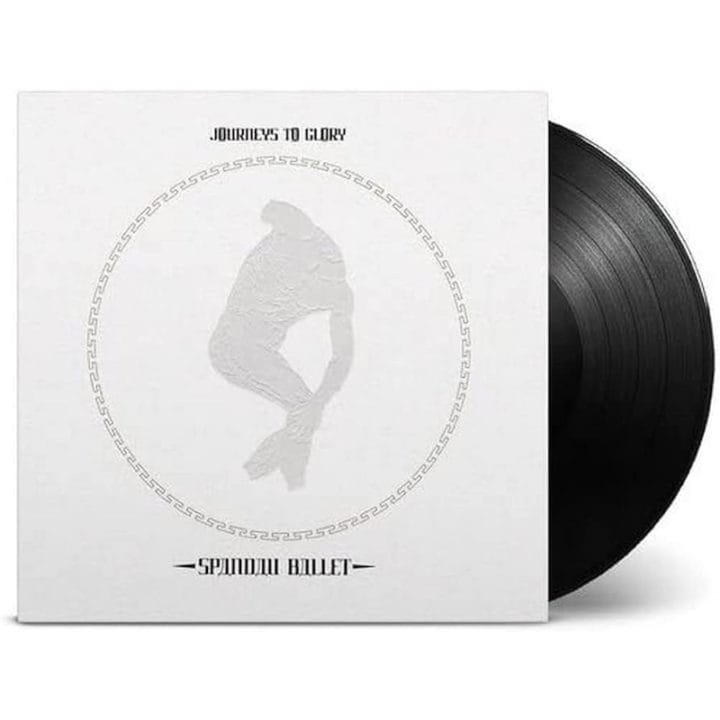 House Band
House Band
As well as soaking up the music, Spandau were enthralled by the licence to dress up. “Steve Strange was smitten with Spandau,” smiles Rusty Egan. “They were fresh-faced, beautiful boys. Steve said: ‘Give them whatever they want,’ but I did the schoolteacher thing on them, giving them a lecture: ‘You don’t need a drummer or guitarist. What guitar can you hear in what I’m playing? OK, there’s Adrian Belew on David Bowie, but are any of you as good as Adrian? I doubt it.’ I made them work for it, and introduced them to their producer, Richard James Burgess. They just needed a producer who knew what he was doing.”
Spandau’s first ever gig was at Blitz’s Christmas party in 1979. “It was utter nerves,” admits Gary. “We knew it was do or die. We couldn’t believe it when people were looking at us, because at Blitz people were only interested in performing themselves, in how they danced. If they hadn’t liked us, that was it. But they did – so that meant my brother was staying in the group.”
Among the audience was Sue Scadding, who remembers: “It was obvious even at the time there was a lot of talent at Blitz. Spandau’s first performance was amazing. It was a trial run before Steve Dagger would let them play anywhere else, and they were fantastic.”
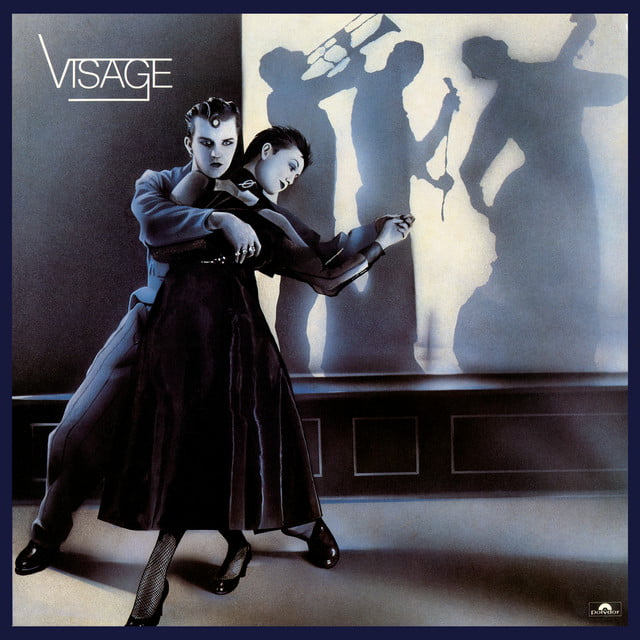
Rich Tapestry
While Spandau were on Top Of The Pops within a year with To Cut A Long Story Short, Egan and Ure were plotting their next band to follow Rich Kids. “Rusty was always a driven, powerhouse of energy,” says Midge. “When he wasn’t banging drums at a million miles an hour, he’d talk at a million miles an hour. I’d listen to his mad ramblings, one of which was: ‘Wouldn’t it be great to get a band together to make the music we like, using all our favourite musicians?’ And that was Visage. Out of Rusty’s millions of outpourings, I jumped on that one.”
They still had demo time owed to them by EMI from Rich Kids, so the pair recorded a cover of Zager And Evans’ In The Year 2525 and a demo of future Visage favourite The Dancer. “We could have gone anywhere,” reasons Ure. “We were on our own, with no template. We just had a synthesizer and a drumkit, but that was the nucleus of what we wanted. It was incredibly basic – one-finger keyboard stuff, a maximum of three fingers. But we made it work.”
Their favourite musicians were soon recruited: John McGeoch, Barry Adamson, Dave Formula and Midge’s new Ultravox bandmate Billy Currie. Having joined Ultravox, Midge didn’t fancy fronting two bands. Why not get Steve Strange in? “Steve wasn’t a natural singer at all – but he was great at everything else,” emphasises Midge. “The look was a major part of it all. He brought the bravado, the look and the great creators who were part of Blitz: the photographers, video-makers, designers. I’d sing the song to Steve, so he’d have my voice in his head while he followed the melodies.”
Glitz & Glamour
While Visage were getting together, Rusty was enjoying blowing people’s minds every Tuesday, behind Blitz’s very primitive decks. “In those days, you couldn’t change the tempo,” he explains. “There was no fader, so you had to use your finger on the decks’ grippy bit to fade a song out. Slipmats only came out later. Technically, it was a little difficult, but you’d get the general idea across.”
Rusty was well aware of the symbiosis between music and fashion that he was introducing: “Blitz took you out of the grim and horrible Thatcherite Britain, with piles of shit on your doorstep. You had no future and nothing glamorous was happening? Forget that, I’m going to get dressed up, so I can forget about my crap on the dancefloor. And if I’m on the dancefloor looking fantastic, I don’t want to hear Boogie Oogie Oogie.”
Alongside Kraftwerk, La Düsseldorf, Nina Hagen and Gina X Performance from his trips to Germany, Rusty would play French chanson music, revealing: “I was an old romantic. I loved French films, Paris and film noir. The music in Death In Venice killed me. What was more interesting than feeling like you’re in a club in Paris, listening to Space or Jean-Michel Jarre or Jacques Brel? We needed a bit of glamour.”
Visiting Royalty
Eventually, Blitz was given the ultimate seal of approval when, in July 1980, David Bowie came to see what all the fuss was about. “When David Bowie walked in, everyone was screaming ‘Bowie! Bowie!,” sighs Philip Sallon. “They were putting their hands in the air to try to get to him. I thought it was disgusting. The overriding message of Blitz was that it was about stardom. Idol worshipping is not my thing, because no one is better than anyone else.”
Not everyone was so starstruck. “I snubbed him,” grimaces Gary Kemp. “I’m as big a Bowie fan as anyone can be, but I was in a band and thinking: ‘No, we’re the next generation.’ Everyone was so excited when Bowie came in, it annoyed me. He went upstairs, so I stayed downstairs, trying to ignore him – when in my heart, it was like the Pope had come in. Bowie arriving was the blessing that Blitz needed to confirm it was the place to be.”
Bowie was also on the lookout for Blitz Kids to star in his Ashes To Ashes video. Steve Strange naturally appeared, helping Bowie to choose regulars Judith Franklin, Elise Brazier and Darla Jane Gilroy to star in the David Mallett-directed promo. They each earned £50 for helping Bowie to kickstart his 1980s.
Something Special
While Boy George admits he didn’t make the grade for the video from his own disappointing first meeting with Bowie, he was clearly destined for stardom with or without his hero. George’s workmate Sue Scadding recalls: “George was always hilarious. He was outrageous. Working with him, I’d think: ‘Oh no, now what?’ You knew he was great, but I didn’t think his singing would be that good. How can you know that when you work with someone? When I first saw Culture Club live, I thought: ‘I never knew you could do that.’”
Bowie’s blessing proved to be the ultimate Blitz moment. By the time the club closed in September 1981, most of its main faces had drifted away. Owner Mike Brown sold it to a restaurant owner who turned it into an American canteen.
By then, Sallon had opened the legendary Mud Club, Strange started goth joint Hell, Egan opened Camden Palace – where he put on the debut British gig by Madonna and the first London show by Frankie Goes To Hollywood. The club is still thriving now, as Koko.
“We realised when we were there that Blitz was something special,” insists Gary Kemp. “When you left, there’d be cameras from Japanese film crews outside.” Boy George has similar memories: “Some photographer or other was always taking pictures and we lived for the pose.”
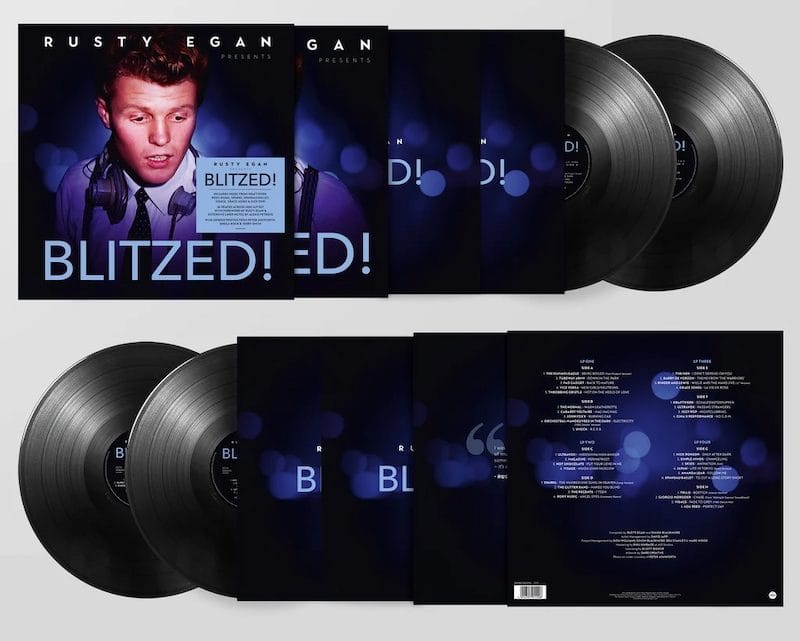
The Other Bloke…
Blitz’s impact was brought home to Sue Scadding when she bumped into Tony Hadley at a recent TV show. She laughs: “I was wearing John Galliano jeans. Tony gave them a tug and said: ‘My God, not another Blitz person!’ It was so funny – a lot came out of Blitz.”
“Clubs are very different now,” considers Philip Sallon, who remains a tireless innovator in London nightlife. “The music at Blitz was tremendously loud. It was a reason to be there. Now, the music is a bit secondary. Clubs are much more about networking.”
Even at a time when Midge Ure was in Ultravox, Visage and Thin Lizzy, Blitz matched them for excitement. “Going from the dying embers of Rich Kids to seeing everything explode within a year was so fortuitous,” he accepts. “For a while, I was riding on the crest of a wave, the guy helping to steer it behind the scenes. It’s short-lived, but for that moment you think: ‘OK, something is happening here.’”
As for the man who helped start it all? “I don’t think Blitz invented the 80s,” ponders Rusty Egan. “That was Margaret Thatcher. She was the one who created Del Boy with his Filofax. What I did was to put together a soundtrack, where everything fell into place.”
He’s overdue some mainstream recognition, is Rusty, still a force as a DJ and remixer. “I’m not as good a songwriter or performer as Midge,” he counters. “Then again, there’s often the other bloke: the other bloke in Soft Cell, the other bloke in Pet Shop Boys. Me? I’m the other bloke.”
To buy Rusty Egan Presents BLITZED! click here
Read More: Top 40 New Romantic songs
The post Inside Blitz – the club that birthed an 80s revolution appeared first on Classic Pop Magazine.
... Continue Reading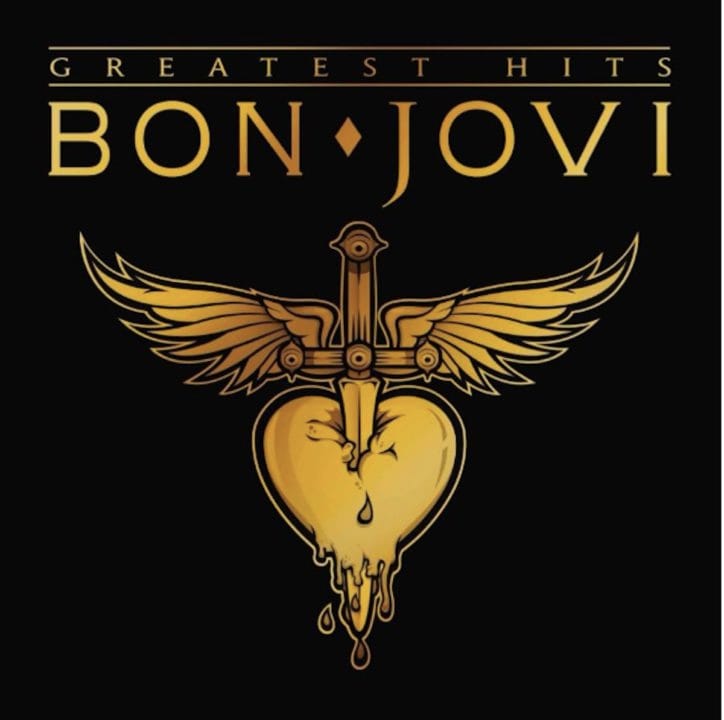
Bon Jovi to release Greatest Hits 2LP vinyl

Bon Jovi will release the classic compilation album, Greatest Hits, on 2LP vinyl this September.
Bon Jovi first unveiled Greatest Hits on 29 October 2010. Upon arrival, it bowed in the Top 5 of the Billboard 200 in addition to capturing No.1 on the US Top Rock Albums Chart and the US Top Hard Rock Albums Chart. It also eventually earned a platinum certification from the RIAA and logged an impressive 352 weeks on the Billboard 200. Across the pond, it crashed the charts at No.2 and reached quadruple-platinum status.
The album collects seminal anthems from the band’s first three decades, spanning everything from Livin’ On A Prayer, You Give Love A Bad Name and Bad Medicine to It’s My Life, Always and Who Says You Can’t Go Home, in addition to a pair of songs specifically recorded for Greatest Hits: What Do You Got?, which became a top 10 hit, and No Apologies.
Greatest Hits (2LP)
Side A
Livin’ On A Prayer
You Give Love A Bad Name
It’s My Life
Have A Nice Day
Wanted Dead Or Alive
Side B
Bad Medicine
We Weren’t Born To Follow
I’ll Be There For You
Side C
Born To Be My Baby
Blaze Of Glory
Who Says You Can’t Go Home
Lay Your Hands On Me
Side D
Always
Runaway
What Do You Got?
No Apologies
Illustrious Career
Bon Jovi has recently achieved a coveted RIAA Diamond for their single Livin’ On A Prayer, recognising sales of 10 Million certified units. This marks the band’s second career milestone following its Diamond status for their Slippery When Wet album.
Throughout their illustrious career, Bon Jovi has sold over a combined total of 72 Million RIAA certified units to date including the album Crossroads (7x Platinum) and the singles Wanted Dead Or Alive (6x Platinum), You Give Love A Bad Name (5x Platinum) and It’s My Life (3x Platinum).
Earlier this year, the first-ever official documentary series about band’s history was released to streaming platform Disney+. The four part series, Thank You, Goodnight: The Bon Jovi Story, was made with the full cooperation of past and present members of the band.
The Bon Jovi 2LP Greatest Hits is out on 13 September 13, to pre-order click here
Read More: Lost & Found – Bon Jovi’s debut album
Want more from Classic Pop magazine? Sign up to our newsletter!
The post Bon Jovi to release Greatest Hits 2LP vinyl appeared first on Classic Pop Magazine.
... Continue Reading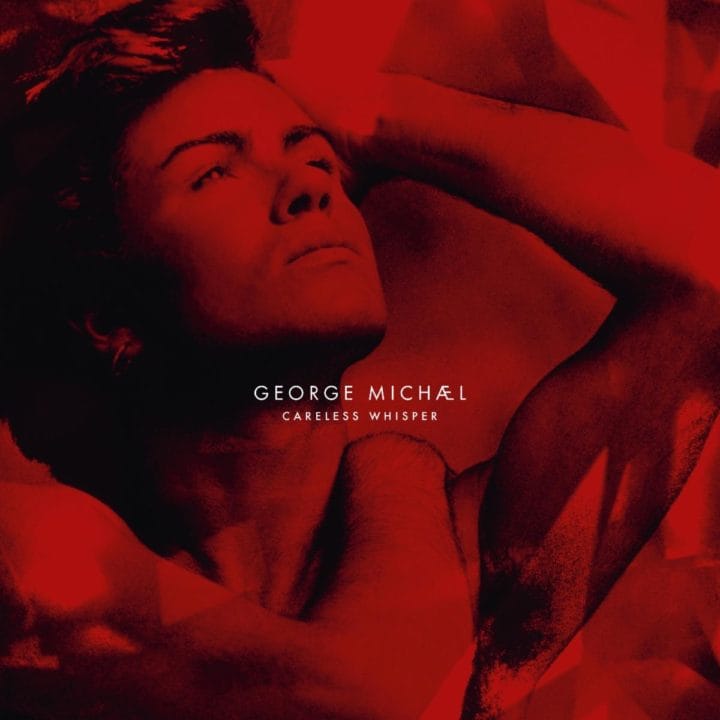
Careless Whisper EP celebrates 40 years of iconic George Michael song

To commemorate the 40th anniversary of George Michael’s much-loved song Careless Whisper, George Michael Entertainment, GME, and Sony Music will be releasing the Careless Whisper EP on 18 October.
Available on both digital and physical formats, the Careless Whisper EP will feature a previously unreleased live recording of the timeless hit performed at the illustrious Madison Square Garden in New York City during George’s electrifying concert on the 23 July 2008.
The recording captures the historic performance marking his reunion with a New York audience after an astounding 17-year hiatus. It was part of his monumental 25Live tour, a worldwide phenomenon that sold out arenas and stadiums and captivated over 1.3 million fans across the globe.
The EP will also include newly mastered versions of the original single, the extended mix and instrumental. Available on 12″ vinyl picture disc, 12″ ruby marble vinyl, 12″ white vinyl, standard 12″ vinyl, CD and digital.
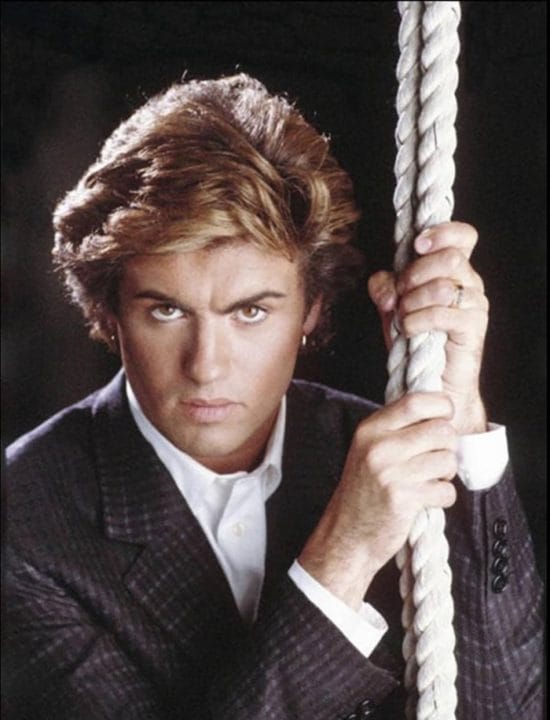
Careless Whisper EP Tracklisting:
- Careless Whisper
- Careless Whisper Extended mix
- Careless Whisper Live At Madison Square Garden, July 2008
- Careless Whisper Instrumental
Topping the charts in 25 countries back in 1984, today Careless Whisper is certified 7 x Platinum in The United States and has sold over 1.5 million copies in the UK alone. It has also been certified Platinum and Diamond in a further 20 countries.
Written with Wham! band mate Andrew Ridgeley when George Michael was just 17 years old, and widely remarked as a masterpiece of contemporary songwriting, today it is hailed as a modern-day classic.
Careless Whisper holds a truly unparalleled legacy that resulted in him becoming the youngest recipient of an Ivor Novello Award at just 21 years old, propelling him into global superstardom. Also making him the first artist ever to top the charts as both a soloist and as a member of a group/duo in the same calendar year.
Unparalleled Legacy
Forty years after its release, Careless Whisper resonates even more with new generations of listeners, with TikTok currently surpassing 700 million views, while on YouTube the video averages close to half a million views every day. It is also a member of YouTube’s and Spotify’s exclusive Billions Club.
Earlier this year the track topped Smooth Radio’s All Time Top 500 poll for a sixth year in a row.
George Michael Entertainment says: “As we celebrate 40 years of Careless Whisper, we are proud to share something truly special with George’s millions of fans around the world. This EP is a heartfelt ‘thank you’ from us to you for your unwavering support and love. We are truly grateful. Thank you”.
To pre-order click here
Read more: Classic Pop’s 40 Best George Michael Songs
The post Careless Whisper EP celebrates 40 years of iconic George Michael song appeared first on Classic Pop Magazine.
... Continue Reading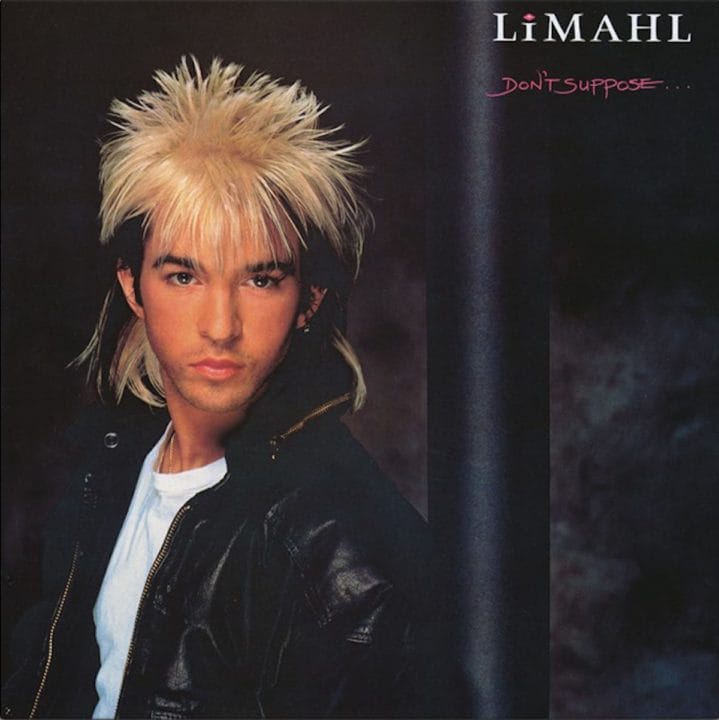
Limahl’s solo debut reissued on recycled lavender vinyl

Originally released in November 1984, Limahl’s debut solo album Don’t Suppose is to be reissued on recycled lavender vinyl to celebrate its 40th anniversary.
Limahl said: “The album was co-produced by British producer Tim Palmer, who has since worked with music legends like U2, Robert Plant, Bowie, and Tears For Fears. I rarely listen to it, but as this anniversary approached, I dared to stream it. It was extremely poignant because, at the time, I was in love with the wrong person.
“My young self was having the time of his life professionally but hurting a great deal personally. The upside is that the heartache provided good material for songwriting, hence a track on the album entitled I Was A Fool.”
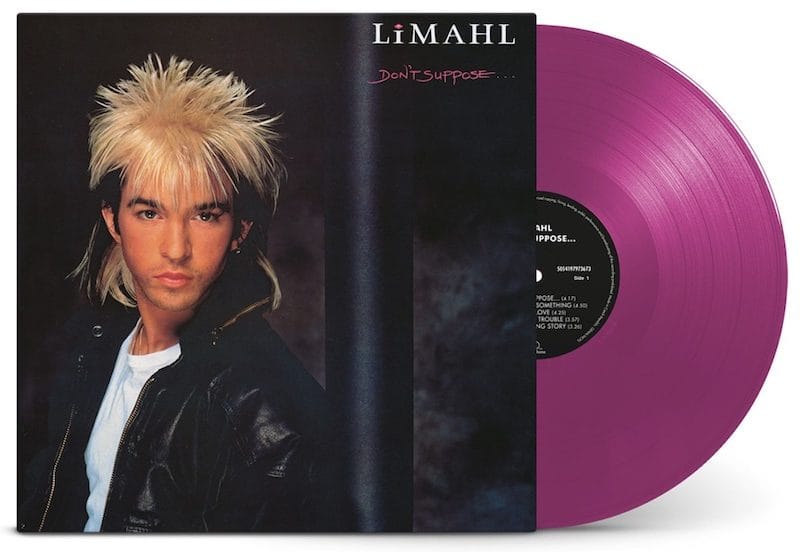
The NeverEnding Story
The song Only For Love, the first single released from the album, peaked at No.16 on the UK Singles Chart in late 1983. Second release, Too Much Trouble, failed to reach the UK Top 40, however, third single The NeverEnding Story, made No.4, stayed in the Top 10 for five weeks, and charted in 17 countries.
As well as featuring in the film of the same name (which is being revived for the big screen once more), The NeverEnding Story more recently found a whole army of new fans when it appeared in the final episode of the third season of Stranger Things. Set in 1985, the song is sung by Dustin (Gaten Matarazzo) and his long-distance girlfriend Suzie (Gabriella Pizzolo) as a way to reconnect after not seeing each other for some time. Following the season’s release on July 4, 2019, interest in the track surged; viewership of the original music video had increased by 800% within a few days according to YouTube, while Spotify reported an 825% increase in stream requests for the song.
Strange Times
But as Limahl explains, the track’s popularity goes beyond Stranger Things and that love and appreciation is not lost on him… “In 2022, I travelled to Madrid for the opening night of the new stage musical adaptation La historia interminable – El Musical and performed the song with the cast at the end of the show. After its successful 12-month run in Madrid, the show is now running in Barcelona, and I can’t help but wonder if the producers plan to translate it to English for the West End or Broadway.
“For the European Championships 2024, ITV created a stunning animated clip featuring a classical instrumental version of the song.”

Not Too Shy [Shy]
Further reflecting on the album Limahl goes on: “I can’t believe it’s been 40 years, yet sometimes it feels like yesterday! Looking back now, it’s surreal to think that at just 24 years old, being born and raised on a Wigan council estate with no family connections in the music business, I was thrust into a whirlwind of travel and appearances to promote my music worldwide via TV, radio, and press – long before the internet.
“I’m excited to imagine where and how the song will continue its journey. It’s amazing that it still feels relevant 40 years on. I’m not too shy to say how immensely proud I am of its achievements.”
To be released on 6 September, it is available for pre-order here.
Read More: Limahl interview: Stranger things have happened
Want more from Classic Pop magazine? Get a free digital issue when you sign up to our newsletter!
The post Limahl’s solo debut reissued on recycled lavender vinyl appeared first on Classic Pop Magazine.
... Continue Reading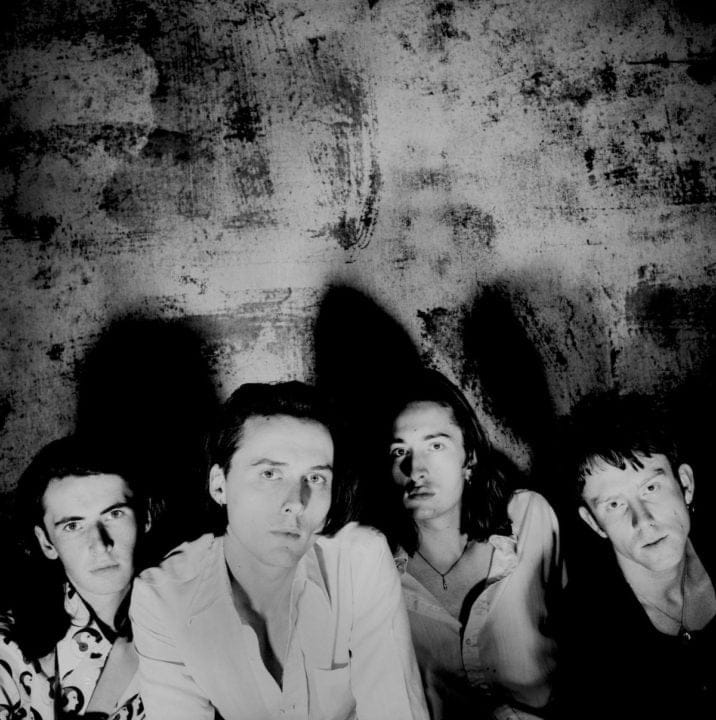
Suede reveal Dog Man Star 30th anniversary edition

Featuring bonus tracks and reimagined artwork, Suede’s essential second album Dog Man Star will be reissued later this year.
Originally released on 10 October 1994, the follow up to Suede’s era-defining self-titled 1993 debut exuded confidence and ambition.
Reflecting on Dog Man Star 30, bassist and founding member Mat Osman said: “Your first album is songs you’ve been playing live for a long time. Generally, it’s almost set. The songs evolved in a certain way and you’re just trying to get them down. Dog Man Star was the first time where we just said, right, what happens if you push everything further? The slow songs, we take all the drums out. If we have a big closing song, we’ll have a fucking orchestra. To start the record, let’s have something that’s on one chord, and it’s just like a mantra. The kind of band we are, how far can we take it before it breaks?”
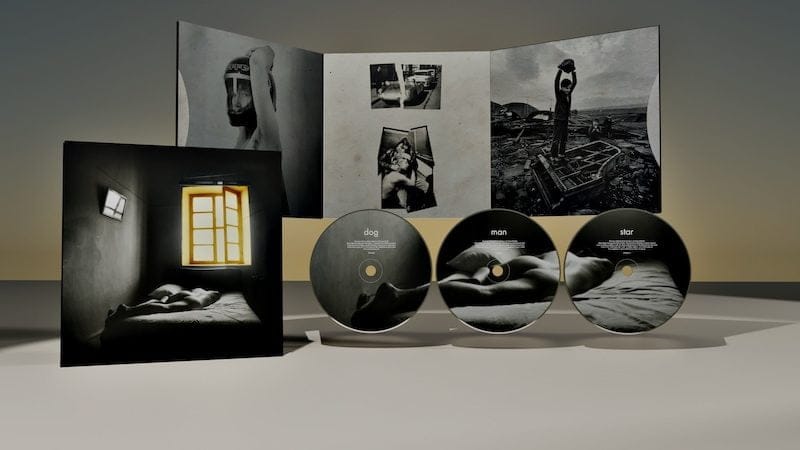
Confidence And Ambition
With Dog Man Star’s release came the dawn of Suede’s triumphant second act. Brett Anderson and Bernard Butler had parted company, but at the apex of their songwriting partnership stood Dog Man Star. Vast, sweeping strings, orchestral ballads and epic widescreen pieces intertwined with rock abrasion. Brett Anderson sang of urban anarchy, surreal, dream-like and apocalyptic visions. Suede had created a sophomore album that pushed the creative envelope and it still sounds as thrilling as ever today.
As part of Dog Man Star 30 celebrations Suede have released the Killing Of A Flash Boy Dog Man Star Tour Film, one of nine rare vignettes captured on location in London and Kent in 1994 by Mike Christie, the band’s long-term visual collaborator who went on to direct and produce the acclaimed 2018 documentary film, Suede: The Insatiable Ones. Watch it below:
Dog Man Star 30
Dog Man Star 30 will be released as a new half-speed master edition pressed on 2LP 180g black vinyl, and a newly mastered 3CD edition. CD1 features the original classic album, CD2 includes the B-sides to all Dog Man Star-era single releases, and the full-length version of the non-album single Stay Together. CD3 includes bonus tracks from the Dog Man Star period.
A highly collectable “Dinked” edition of the album will be available on 2LP, including yellow gatefold packaging, and an exclusive two sided 7″ single featuring the songs The Living Dead (Piano Version) and La Puissance (The Power) on vinyl for the first time. More Dog Man Star 30 releases are to be announced.
Art and design for Dog Man Star 30 has been undertaken for Suede by the band’s official designer and photographer Paul Khera, reimagining the iconic original photographs taken by Joanne Leonard and selected by Brett Anderson for the album’s front and back cover.
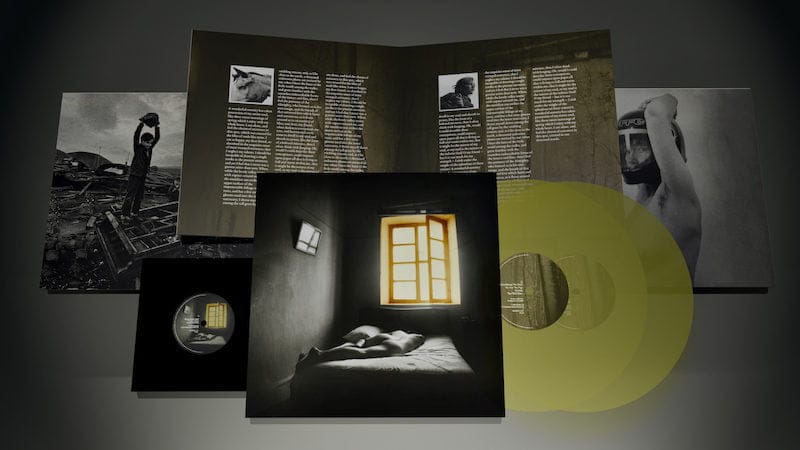
CD 1
1. Introducing The Band
2. We Are The Pigs
3. Heroine
4. The Wild Ones
5. Daddy’s Speeding
6. The Power
7. New Generation
8. This Hollywood Life
9. The 2 Of Us
10. Black Or Blue
11. The Asphalt World
12. Still Life
CD 2
1. My Dark Star
2. The Living Dead
3. Stay Together – long version
4. Killing Of A Flash Boy
5. Whipsnade
6. This World Needs A Father
7. Modern Boys
8. Eno’s Introducing The Band
CD3
1. La Puissance (The Power)
2. The Living Dead – piano version
3. We Believe in Showbiz – unreleased at time of recording
4. Still Life – orchestral version
5. The Wild Ones – original unedited version
6. The Asphalt World – original unedited version
7. Stay Together (Single Version)
8. NME Flexi
Due 4 October via Demon Music. To pre-order click here
Want more from Classic Pop magazine? Get a free digital issue when you sign up to our newsletter!
The post Suede reveal Dog Man Star 30th anniversary edition appeared first on Classic Pop Magazine.
... Continue Reading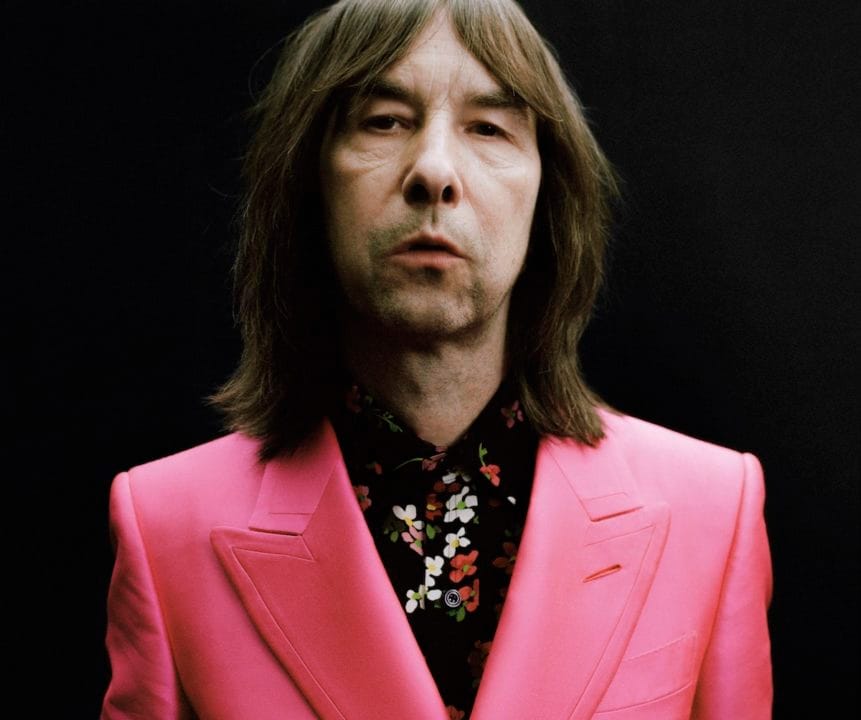
Primal Scream return with new studio album

Primal Scream announce return with Come Ahead, the new studio album due for release on 8 November 2024.
Come Ahead is Primal Scream’s 12th full-length record and first new music since 2016’s Chaosmosis. The 11 new songs promise to be among vocalist and frontman Bobby Gillespie’s most personal.
Bobby Gillespie said: “I’m very excited about this album in a way that you would be making your first record. If there was an overall theme to Come Ahead it might be one of conflict, whether inner or outer. There is also a thread of compassion running through the album. The title is a Glaswegian term. If someone threatens to fight you, you say, ‘come ahead!’ It’s redolent of the indomitable spirit of the Glaswegian, and the album itself shares that aggressive attitude and confidence. They have a word for this up there, gallus. Come Ahead’s quite a cheeky title too.”
The news comes as Primal Scream reveal funky new single Love Insurrection. Listen below:
Message Of Hope
The songwriting process for Come Ahead began in 2022. At which point Bobby Gillespie had no idea if he would make another Primal Scream album again. For the first time in a long time, the lyrics came before the music. The story came first. Bobby wrote alone, using an acoustic guitar. Ideas flowed fast, in long bursts of inspiration.
This process, in tandem with encouragement from producer David Holmes, provided a new way in. Working with Holmes and Primal Scream guitarist Andrew Innes, the Come Ahead sessions were completed between Belfast, London and Los Angeles.
The album artwork was created using a photograph of Bobby’s late father, Robert Gillespie Senior, by Turner Prize nominated artist Jim Lambie. Bobby’s father remains deeply respected for his lifelong commitment to campaigning for social justice, and themes of class run through Come Ahead. “There is a message of hope in the record,” says Bobby Gillespie “but it’s tempered with an acceptance of the worst side of human nature.”
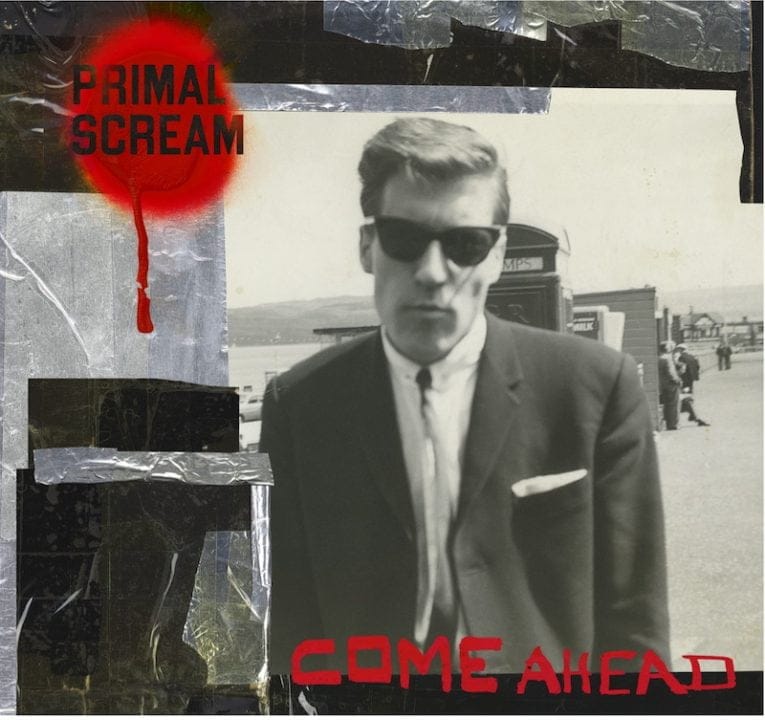
Come Ahead Tracklisting
1. Ready To Go Home
2. Love Insurrection
3. Heal Yourself
4. Innocent Money
5. Melancholy Man
6. Love Ain’t Enough
7. Circus Of Life
8. False Flags
9. Deep Dark Waters
10. The Centre Cannot Hold
11. Settler’s Blues
The album is released physically on double vinyl and CD with a limited mirrorboard gatefold double silver vinyl available at HMV and indie stores, plus a limited mirrorboard gatefold double red vinyl and an exclusive t-shirt available on the official album store here.
Want more Classic Pop? Sign up for our newsletter
The post Primal Scream return with new studio album appeared first on Classic Pop Magazine.
... Continue Reading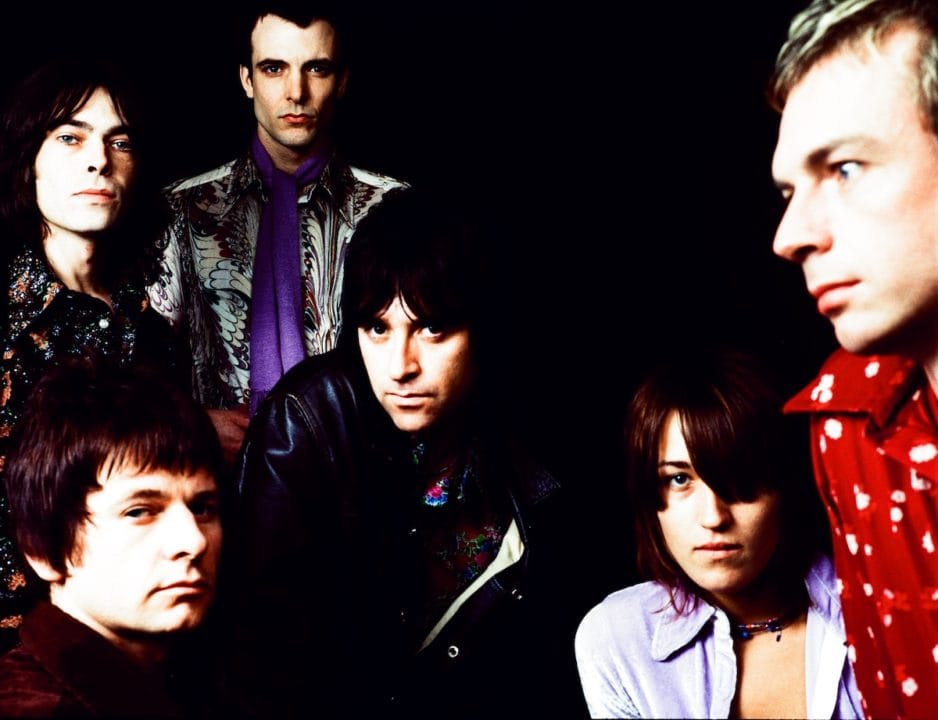
Johnny Marr + the Healers’ Boomslang special edition

Johnny Marr + the Healers’ Boomslang is to receive a special edition album release 21 years since its 2003 debut. In addition to the album’s 11 original songs, Boomslang 2024 offers fans new and unheard material.
Seven previously unreleased recordings appear, including: The Way That It Was, Get Me Wrong, A Woman Like You, a cover of Bob Dylan’s Don’t Think Twice It’s All Right, plus an extended mix of original album track You Are The Magic (Union Mix), Get Me Wrong (Instrumental Version) and the expansive, swirling desert jam All Out Attack.
Listen to All Out Attack below:
Unique Snapshot
Boomslang represents a unique snapshot of Johnny Marr’s creativity at the dawn of the 21st century. Leaning into new technology, experimenting with new ways to write, record and think.
After becoming a member of The Pretenders, The The, Electronic, Neil Finn’s 7 Worlds Collide, and writing and performing with Pet Shop Boys, Bryan Ferry, Kirsty MacColl, Talking Heads, Beck and countless others, Johnny Marr + the Healers formed by chance.
Marr first met drummer Zak Starkey following a Who concert at Madison Square Garden in the summer of 1999. Former Kula Shaker bassist Alonza Bevan joined the pair later, following a recommendation from Noel Gallagher. Percussionist Liz Bonney emerged from Byron Bay with Lee Spencer’s rainforest synth wizardry in tow. Adam Gray summoned his slide guitar for the ‘Electro-Cosmic-Blues’ and, united by chemistry and cosmic energy, the Healers came into existence.
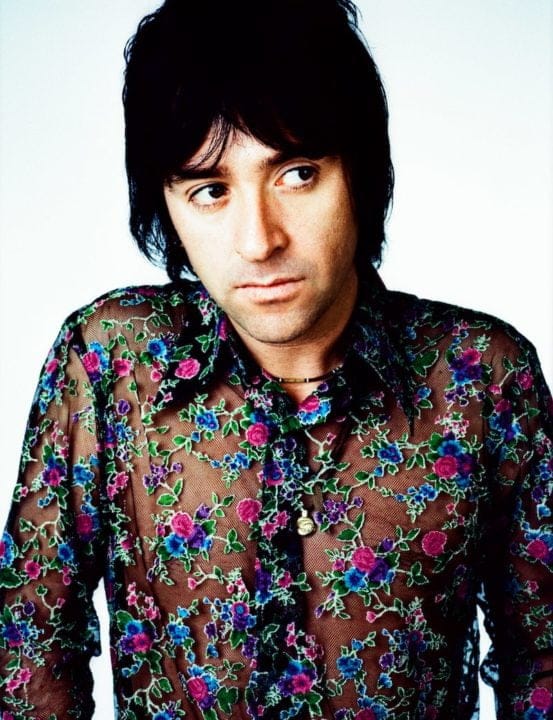
Experimental Sounds
Reflecting on Boomslang, Johnny Marr said: “We holed ourselves up in our own otherworld and experimented with different ways to write, record and think; guitars and percussion all together in a room, and programming with new technology from the electronic scene. Everything was about discovery.
“Twenty years on, I’m pleased we created the music and this new release of Boomslang has given me the opportunity to revisit it and present some songs that we weren’t able to include the first time around. The Healers was something special that happened to me and I’m grateful that it did. A special group of people in a special moment in time.”
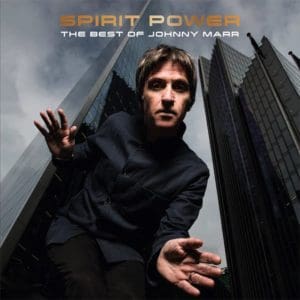
The Healers provided a vital stepping stone for Marr’s next creative chapter. After touring America and releasing Boomslang, Johnny became a member of Modest Mouse, later leaving to join The Cribs, all before launching his current band in 2013.
Marr’s prolific solo output has given rise to five UK Top Ten albums – The Messenger (2013), Playland (2014), Call The Comet (2018), Fever Dreams Pts 1-4 (2022) and Spirit Power: The Best Of Johnny Marr (2023) – a record that captured the full measure of this extraordinarily prolific period.
The news of Boomslang arrives amidst a busy live season for Johnny Marr. The Spirit Power Tour continues through the summer months amongst a wave of activity celebrating the first 10 years of Johnny’s solo career. Last remaining tickets are available here.
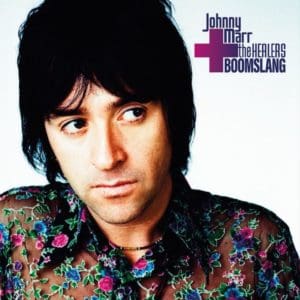
Boomslang Original Track Listing:
The Last Ride
Caught Up
Down On The Corner
Need It
You Are The Magic
InBetweens
Another Day
Headland
Long Gone
Something To Shout About
Bangin’ On
Boomslang 2024 Previously Unreleased Songs:
The Way That It Was
All Out Attack
Get Me Wrong
Don’t Think Twice It’s All Right
A Woman Like You
You Are The Magic (Union Mix)
Get Me Wrong (Instrumental Version)
The Boomslang reissue will be released on formats including 2LP 180g vinyl, 2CD and HD streaming/download via BMG on 20 September. To pre-order click here
Read more: The Smiths – the complete guide
The post Johnny Marr + the Healers’ Boomslang special edition appeared first on Classic Pop Magazine.
... Continue Reading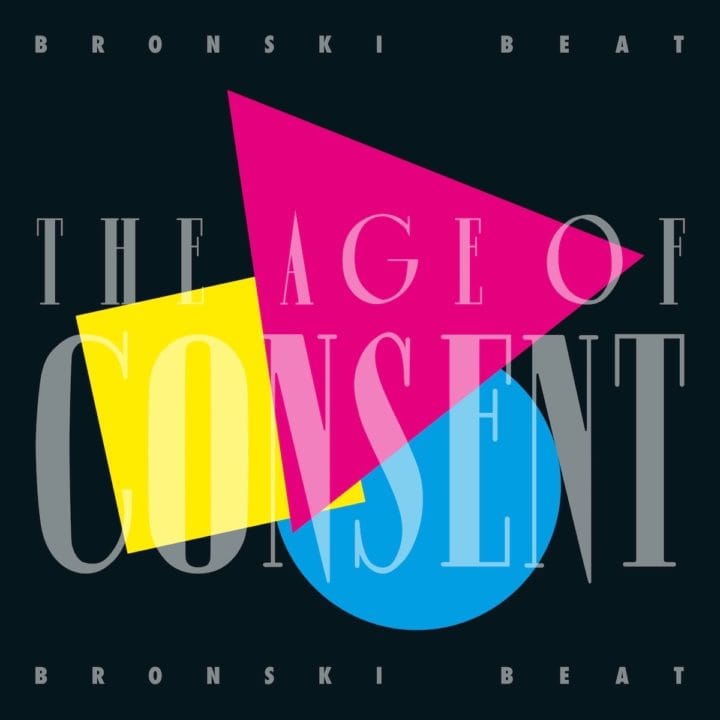
Bronski Beat announce The Age Of Consent deluxe reissue

Bronski Beat announce 40th anniversary deluxe reissue of The Age Of Consent.
To mark the 40th anniversary of The Age Of Consent, London Records will release deluxe reissue editions of Bronski Beat’s groundbreaking debut album on 18 October.
To celebrate the announcement of the reissue, London Records has also shared another remix of Smalltown Boy by Bolton-born, Tallinn based singer-songwriter, composer, producer, DJ and director Planningtorock.
Watch their remix below:
Theme Of Liberation
A self-taught, trans non-binary, working-class musician, Planningtorock spent almost two decades queering sound and visual art, and working as a remixer for Lady Gaga, Robyn, Christine and The Queens and Romy to name but a few, places them in perfect stead to handle the remix of Queer call-to-arms Smalltown Boy.
Planningtorock said: “I first saw Smalltown Boy on telly back in 1984 when I was twelve. I remember it having a big impact on me even then. Just loved how it told the story so directly like a mini documentary but as a music clip sharing a gay experience that was sad to watch but at the same time so empowering. Those early years as a queer trans kid were so lonely for me and Bronski Beat made me feel less alone showing me how music can help you translate a painful experience into something liberating.”
Jimmy Somerville commented: “When there is something we do in our life that can have such an impact on other peoples’ lives, and to be told this by others, it’s humbling. The Age Of Consent is, and always will be, such a special part of my life.”
Relevant Record
Released in 1984, The Age of Consent was a pioneering voice in the fight for queer liberation and equal rights, bravely addressing the struggles and triumphs of LGBTQ+ communities at a time when such discussions were often silenced.
Fast forward 40 years, and while some milestones such as equal marriage have been won, the fight for true equality throughout the LGBTQ+ community continues. Following a general election in the UK that saw the Trans community spotlighted in a vicious culture war, and essentially used as a political football, the album’s themes of liberation and defiance remain as prescient today as they were then.
In the 1984 release, Bronski Beat took a skillful sideswipe at the body politic by listing the ages of consent in every country around the world on the inside jacket – the album still serves as a reminder of both progress made and battles yet to be won by an increasingly marginalised LGBTQ+ community.
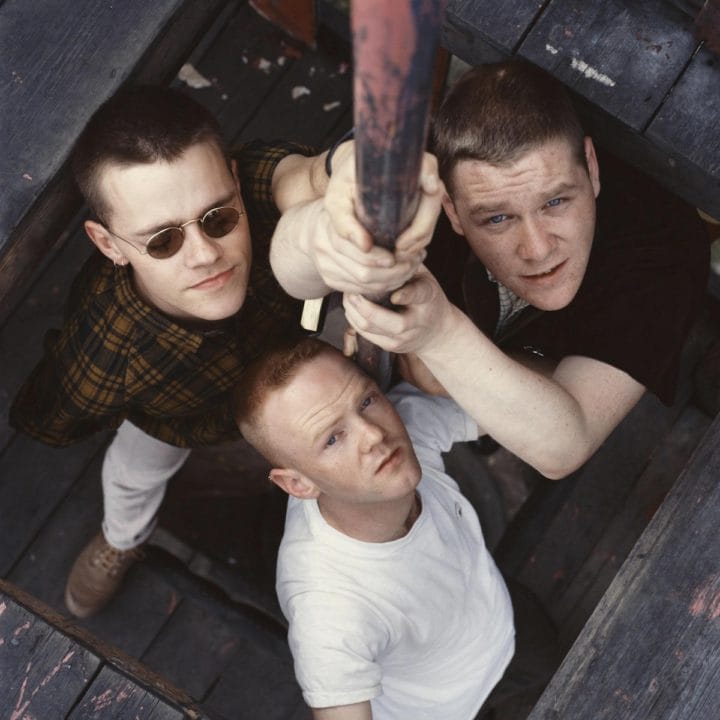
The Age Of Consent
To mark this momentous occasion, the 40th-anniversary reissue of The Age Of Consent will be available in a variety of physical and digital formats, including a five-Disc Deluxe Edition (4CD+DVD): featuring four essays by Tom Rasmussen, Lesley Chow, Lucy Robinson, and Barney Ashton-Bullock, the original album, bonus tracks, remixes, rarities, early versions, and rare radio sessions. Its DVD comes with restored promo videos, Top of the Pops performances, and original TV adverts.
Other formats include 2CD with new reworks, 2LP (with The Age Of Consent and its neighbouring remix album Hundreds & Thousands, a yellow 1LP edition (Lexer Music Exclusive), and a Super Deluxe Edition exclusive Blu Ray edition featuring The Age Of Consent and Hundreds & Thousands in Dolby Atmos & 5.1 mixes.
4CD+DVD DELUXE SET TRACKLISTING
Disc One
The Age Of Consent – The Album Plus
Why?
It Ain’t Necessarily So
Screaming
No More War
Love And & Money
Smalltown Boy
Heatwave
Junk
Need A Man Blues
I Feel Love / Johnny Remember Me
Smalltown Boy (DJ 7″ edit) – Bonus Track
Why? (Remix) – Bonus Track
It Ain’t Necessarily So (7″ version) – Bonus Track
I Feel Love (7″ version) with Marc Almond – Bonus Track
Run From Love (radio version) – Bonus Track
Hard Rain (NME 7″ version) – Bonus Track
Disc Two
Hundreds & Thousands – The Remix Plus
Heatwave (Harvey Goldberg remix)
Why (Harvey Goldberg remix)
Run From Love (Dominic Maita remix)
Hard Rain (Harvey Goldberg remix)
Smalltown Boy (Harvey Goldberg remix)
Junk (Harvey Goldberg remix)
Love And Money (Hundreds & Thousands remix) * – Bonus Track
Infatuation / Memories – Bonus Track
Close To The Edge – Bonus Track
I Feel Love (Cake Mix) with Marc Almond – Bonus Track
Cadillac Car (Extended) – Bonus Track
Disc Three
Consent Extended – The 12 Inches Plus
Smalltown Boy (12″ version)
Why? (12″ version)
It Ain’t Necessarily So (12″ version)
I Feel Love (12″ version) with Marc Almond
Run From Love (US Club Remix 85) *
Smalltown Boy (US Club Remix 84) *
Red Dance
The Potato Fields
Puit D’Amour
Signs (And Wonders)
I Feel Love (Fruit Mix)
Disc Four
Ignore At Your Peril – The Rarities Plus
Smalltown Boy (Capital Radio Session, May 84) *
Heatwave (Capital Radio Session, May 84) *
Hard Rain (Capital Radio Session, May 84 )*
Why? (Early Version, March 84) *
Crazy Maraquitta (Studio Session) *
It Ain’t Necessarily So (Early Version) *
Upside Down (Studio Session) *
Screaming (Early Version, March 84) *
The Power Of The Gold (Studio Session) *
Love And Money (Early Version) *
First Church (Feel Love) (Studio Session) *
Junk (Early Version 2) *
Walking (Studio Session) *
No More War (Early Version) *
Go (You & Me) (Studio Session) *
Close To The Edge (Early Alternate Extended Mix) *
Heatwave (Early Version) *
The Other Side Of The Tracks (Studio Session) *
Smalltown Boy (Early Version, March 84) *
Disc Five
The First Chapter – The Videos Plus DVD
Official Music Videos
Smalltown Boy (Restored Promo)
Why? (Restored Promo)
It Ain’t Necessarily So (Restored Promo)
I Feel Love (Restored Promo) with Marc Almond
Top Of The Pops Performances
Smalltown Boy (BBC Top Of The Pops, June 84)
Why? (BBC Top Of The Pops September 84)
It Ain’t Necessarily So (BBC Top Of The Pops, December 84)
I Feel Love (BBC Top Of The Pops, April 85) with Marc Almond
Original TV Adverts
The Age Of Consent – TV Advert #1 (December 84) *
The Age Of Consent – TV Advert #2 (January 85) *
* Previously Unreleased
2CD Tracklisting
Disc One
Why?
It Ain’t Necessarily So
Screaming
No More War
Love And Money
Smalltown Boy
Heatwave
Junk
Need A Man Blues
I Feel Love / Johnny Remember Me
Smalltown Boy (Absolute. Extended Rework)
Smalltown Boy (Planningtorock’s ‘The Love That You Need’ Rework)
Smalltown Boy (Dave Audé Vs Tall Paul Remix) *
Why? (Superchumbo Mix Ft. Neil Tennant) *
Smalltown Boy (The Knocks & Bronski Beat Ft Perfume Genius) *
Disc Two
Heatwave (Harvey Goldberg Remix)
Why (Harvey Goldberg Remix)
Run From Love (Dominic Maita Remix)
Hard Rain (Harvey Goldberg Remix)
Smalltown Boy (Harvey Goldberg Remix)
Junk (Harvey Goldberg Remix)
Love And Money (Hundreds & Thousands Remix) *
Infatuation / Memories
Close To The Edge
I Feel Love (Cake Mix) with Marc Almond
Cadillac Car (Extended)
To pre-order click here
Sign up for the Classic Pop newsletter
The post Bronski Beat announce The Age Of Consent deluxe reissue appeared first on Classic Pop Magazine.
... Continue Reading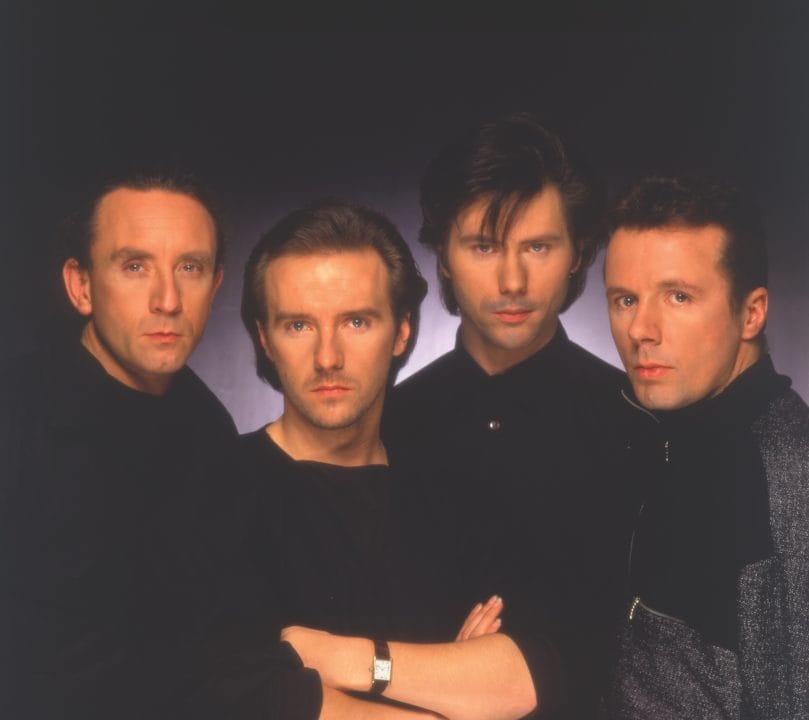
Ultravox Exclusive: Lament Deluxe Edition Preview

In collaboration with Chrysalis Records, Classic Pop can share an exclusive Ultravox lyric video of Steven Wilson’s Remix Edit of White China.
This White China Steven Wilson Remix Edit offers a sneak preview of the exceptional extended remix disc that accompanies Lament 2024 Deluxe Edition.
Watch the lyric video below:
Lavish Affair
Following the success of the deluxe reissues of Vienna, Rage In Eden and Quartet albums, Chrysalis Records will release a 40th Anniversary Deluxe Edition of the band’s hugely successful fourth album with Midge Ure, on 6 September.
With the experience gained from working with legendary producers Conny Plank (1981’s Rage In Eden) and George Martin (1982’s Quartet), 1984’s Lament was a self-produced album.
An emotionally darker, more melancholic affair than its predecessor, in the context of the times and with the world at the height of the Cold War, the album deals with themes such as paranoia, the fear of nuclear annilation and creeping communism.
The final album of this incanation of Ultravox (until 2012’s Brill!ant), Lament went on to sell over 100,000 copies in the UK and whilst full of desolate themes, it was once again a lavish musical affair which captivated fans and sounds as contemporary today as it did 40 years ago.

Exhaustive Edition
This new eight disc boxset contains 72 tracks in total, with 45 previously unreleased recordings. CDs 1-6 contain the original 1984 album production master, a new stereo mix by Steven Wilson (Porcupine Tree), a newly mixed Extended Re-Mix of the album comprises new remixes by Moby, Blank & Jones, Steven Wilson and Midge Ure, A-sides, B-sides and rarities, while CDs 7-8 comprise Ultravox’s previously unreleased Set Movements concert recorded at Hammersmith Odeon in 1984.
The new 5LP Limited Edition Clear Vinyl box set contains 34 tracks in total, with a previously unreleased recordings. LP1 is the original album remastered, LP 2+3, the newly mixed Lament Extended Album Re-Mix comprises new remixes by Moby, Blank & Jones, Steven Wilson and Midge Ure, whislt LP 4+5 comprises Ultravox’s Set Movements 1984 concert recorded at Hammersmith Odeon in 1984.
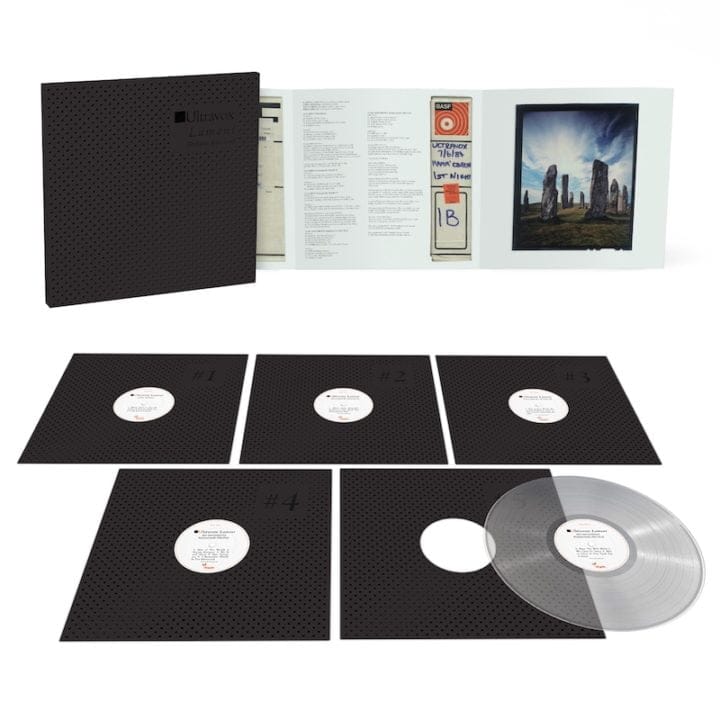
Limited Issue
The new 2LP vinyl was mastered from the original ½” masters by Phil Kinrade and cut at half-speed by Barry Grint at AIR Studios, London. The limited edition pressing features 2LPs with two etched, housed in a ¾ length slipcase and with a four-panel insert inside.
All formats of the reissue have been designed replicating designer Peter Saville’s original black-print-on-black-card artwork and include a booklet featuring band interviews with Classic Pop’s John Earls.
For full details and track listings click here.
Ultravox release the Lament 40th anniversary edition on 6 September. To pre-order click here
Want more? We take a look through the albums of Ultravox
The post Ultravox Exclusive: Lament Deluxe Edition Preview appeared first on Classic Pop Magazine.
... Continue Reading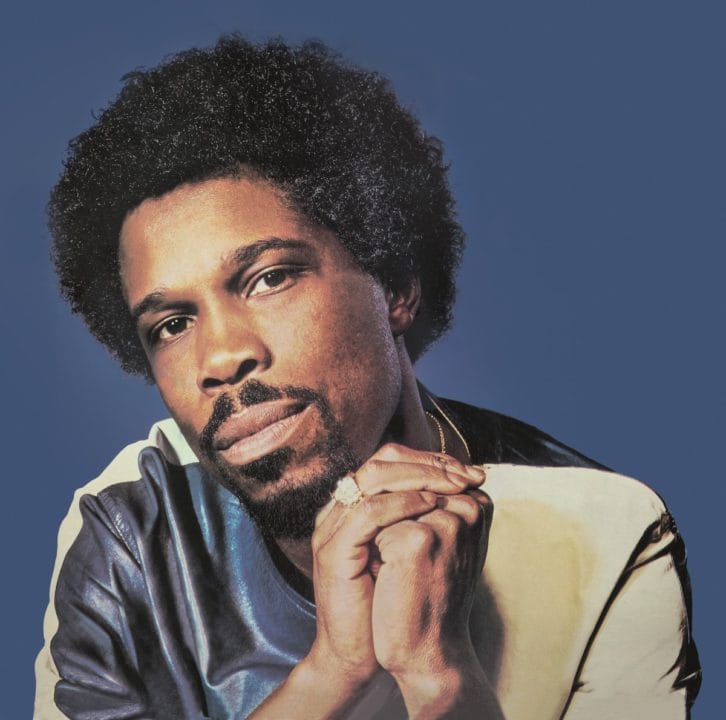
Billy Ocean celebrates the 40th anniversary of Suddenly

Billy Ocean celebrates the 40th anniversary of his landmark album Suddenly with the release of a new ocean blue vinyl on 13 September.
Ocean had enjoyed chart success with a pair of No.2 hits prior to Suddenly (Love Really Hurts Without You and Red Light Spells Danger) but this record catapulted him to new heights.
Its lead single Caribbean Queen (No More Love On The Run) raced to No.1 in the States and No.6 in the UK, with the follow-ups Loverboy and the title track also international smash hits. The album was similarly successful, leading to his first Top 10 album positions in both the UK and US, while Caribbean Queen would later be rewarded with a Grammy Award for Best Male R&B Performance.
Pop Sensibility
Suddenly feels just as fresh all these years later, its sublime mix of R&B and soul with a pop sensibility together with Billy’s irresistible voice and memorable songwriting still standing tall. His collaborators on the record include the late producer Keith Diamond, who Billy credits with giving him the confidence to realise his potential on this album, plus Mutt Lange, who would become one of his regular co-writers, and Barry Eastmond, who he still works with today.
Billy says, “It has been 40 years since we released the Suddenly album. I’m getting goosebumps going down memory lane! I had the time of my life writing and recording this album. I still have fond memories of the excitement of recording at Unique Studios in New York.
“It was almost like being tested, I remember how terrible the weather was. But I was determined that nothing was going to stop me. I’ve been on quite a journey since, and I want to thank all of my fans for embracing these songs and allowing me the honour to still be performing them for you all these years later.”
Continued Success
Billy Ocean’s success continued in the wake of Suddenly, achieving similarly great things with the subsequent albums Love Zone and Tear Down These Walls, as well as further signature hits such as When The Going Gets Tough, The Tough Gets Going, There’ll Be Sad Songs (To Make You Cry) and Get Outta My Dreams, Get Into My Car.
After some years out of the spotlight, his reputation flourished again in the 21st century with the Lifetime Achievement Award at the MOBOs. His recent UK tours have included major Londonshows at the Royal Albert Hall and the Palladium, while his total global album sales have exceeded 30 million.
His upcoming UK shows include headline sets at all three Rewind Festivals, plus the Boogie By The Sea extravaganza in Hastings alongside Sister Sledge, Soul II Soul and Boney M. For a list of all shows and ticket information click here.
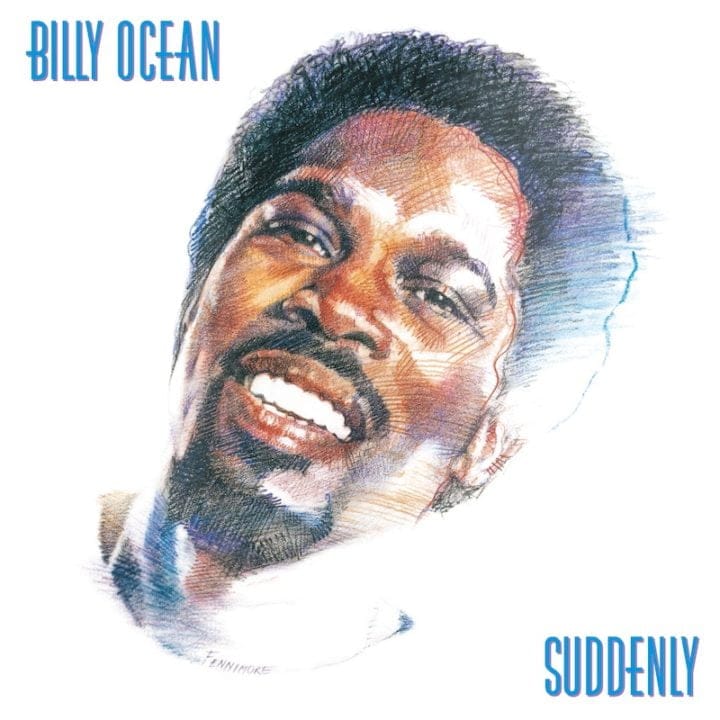
Ocean Blue
The ocean blue vinyl will feature the original Jive Recordings packaging and will feature a message from Billy printed on its innersleeve. A limited run of 500 vinyl will also be available via his UK official store, which adds a 12×12″ signed insert of the album artwork.
Suddenly tracklist
Side A
1 Caribbean Queen (No More Love On The Run)
2 Mystery Lady
3 Syncopation
4 The Long And Winding Road
Side B
1 Loverboy
2 Lucky Man
3 Dancefloor
4 If I Should Lose You
5 Suddenly
Suddenly is available to pre-order here
Read More: Popscene – Smooth Soul
Want more Classic Pop? Sign up for our newsletter
The post Billy Ocean celebrates the 40th anniversary of Suddenly appeared first on Classic Pop Magazine.
... Continue Reading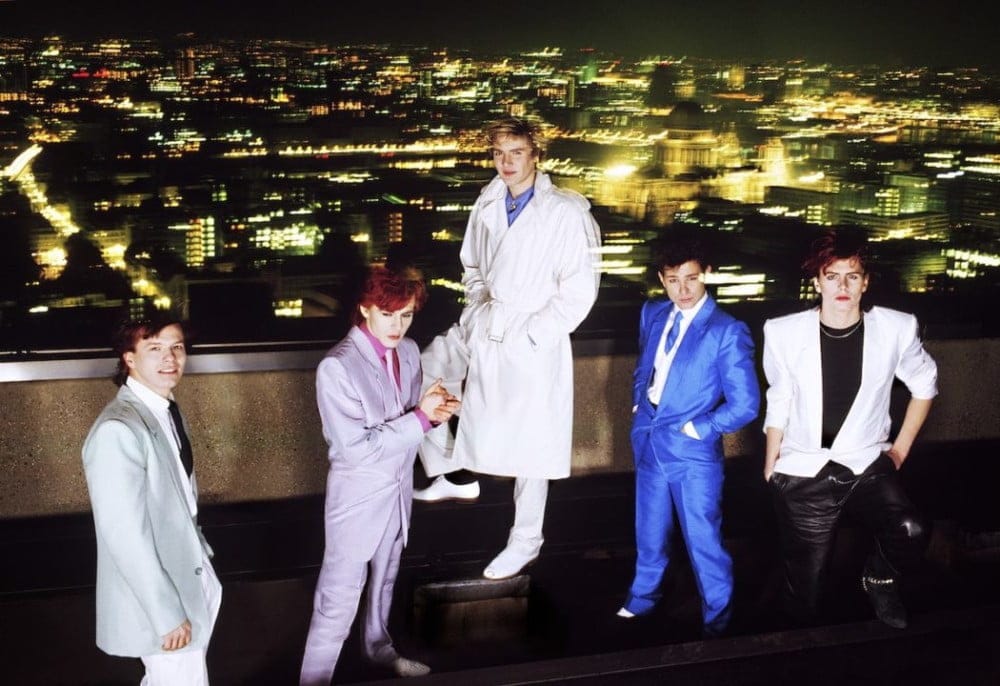
Words & Pictures: Duran Duran dip into the archives

Words & Pictures: Duran Duran
Duran Duran’s celebrated first five albums defined the sound and style of an era and continue to soundtrack the lives of millions of fans around the world.
Long out of print, 1981’s Duran Duran, 1982’s Rio, 1983’s Seven And The Ragged Tiger, 1986’s Notorious, and 1988’s Big Thing, will be reissued in the original 1LP and 1CD format via Warner Music on 19 July.
To coincide with the reissue series, the band dip into the archives to share with Classic Pop iconic photographs and chronicled quotes – taken from varying points in their career – to offer fans an intimate insight into one of the most influential groups of all time.
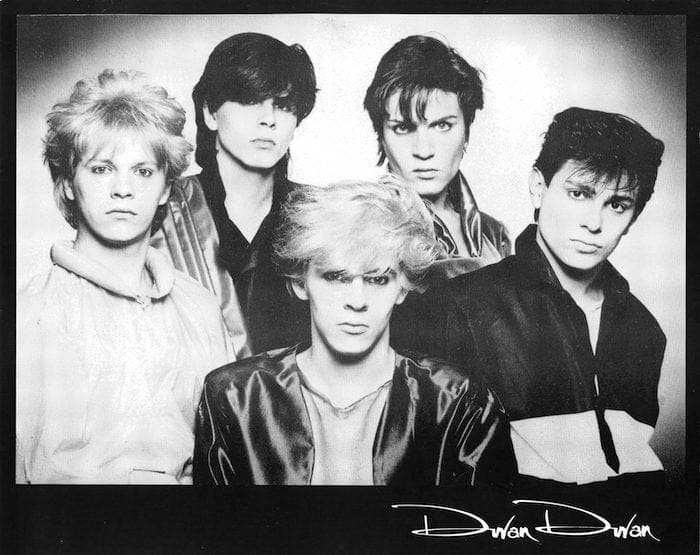
Hailing from Birmingham, John Taylor and Nick Rhodes formed Duran Duran in 1978. Reflecting in 1993, Nick said: “When John and I formed Duran Duran we were very ambitious, very optimistic and very naive. And out of that came this total belief that the thing was going to work… We had a very clear vision of where we wanted Duran Duran to go. It actually took two years to realise that vision – after Simon [Le Bon] joined the band, and the other two Taylors [Roger and Andy] we had collected along the way were on board.”
“There was a common feeling, a feeling of being part of something new and this being our time – the chance for us to go straight out there and have hits and to grab people by their throats and say ‘we’re here, we have arrived’,” added Simon.
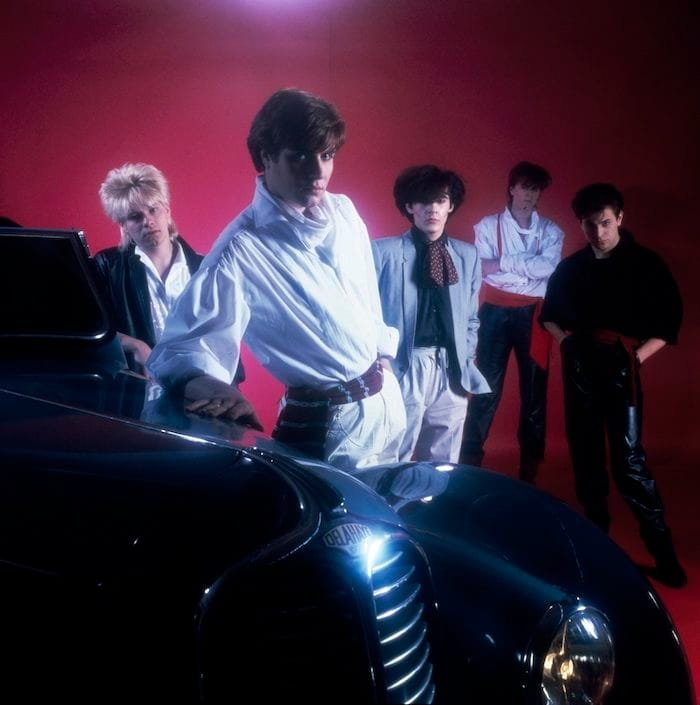
Daring Debut
Originally released in 1981, their self-titled debut’s era-defining boldness completely solidified the signature sound of Duran Duran, while simultaneously soundtracking turn of the decade angst, and introducing a new British pop order. The first single, Planet Earth, had reached the UK’s Top 20 at No.12 in February. While follow-up, Careless Memories, released in April, stalled at No.37, the third single, Girls On Film, was released in July and went to No.5 in the UK and took a fledgling MTV by storm in the United States.
“It was the dawning of the video age,” recalled Nick in 1993. “It was a time of a lot of excitement because it was coming towards the end of a decade again. I think that always changes people’s perceptions and we had a very clear vision of where we wanted Duran Duran to go.”
“When we began making videos the whole idea to me seemed ridiculous,” said John. “I mean I got into this game because I wanted to make records and I wanted to play to people, and when I was told I had to make these little films, these mini dramas, I thought ‘this is ridiculous, I don’t want to do this’.”
“We went to Sri Lanka to shoot three videos,” offered Simon. “Then we took a flight to Australia, because we were starting a tour there. And then after that, we went to America, and finally we came back to England. This was maybe six, seven months after we’d left. And suddenly, while we were away the videos had been in heavy rotation, we were stars and it was getting off that airplane that really brought it home. We didn’t think about it while we were on the road working.”
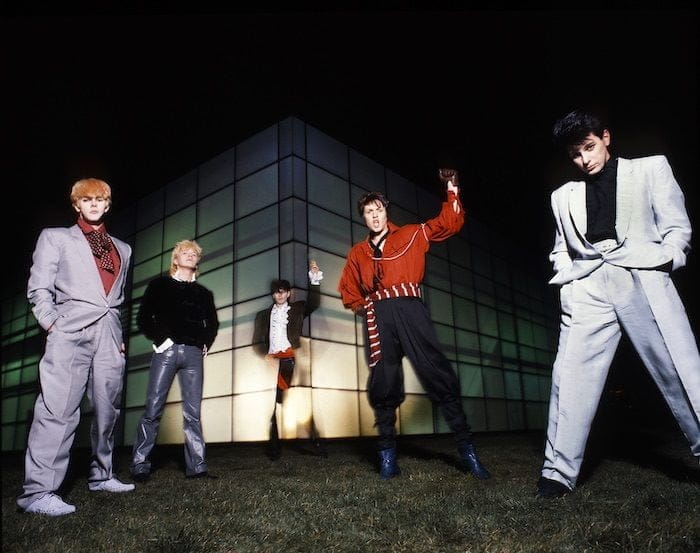
Her name is Rio…
In May 1982, Duran Duran released their second album, Rio, which entered the UK Albums Chart at No.4 and peaked at No.2 the following week.
Nick, speaking in 1998, said: “When we made the Rio album, we were all terrified of the success of the first album and we thought ‘how on earth are we going to top that?’. We knew at this stage that we had things like Save A Prayer and Hungry Like The Wolf, but we just didn’t know how the public was going to accept them.”
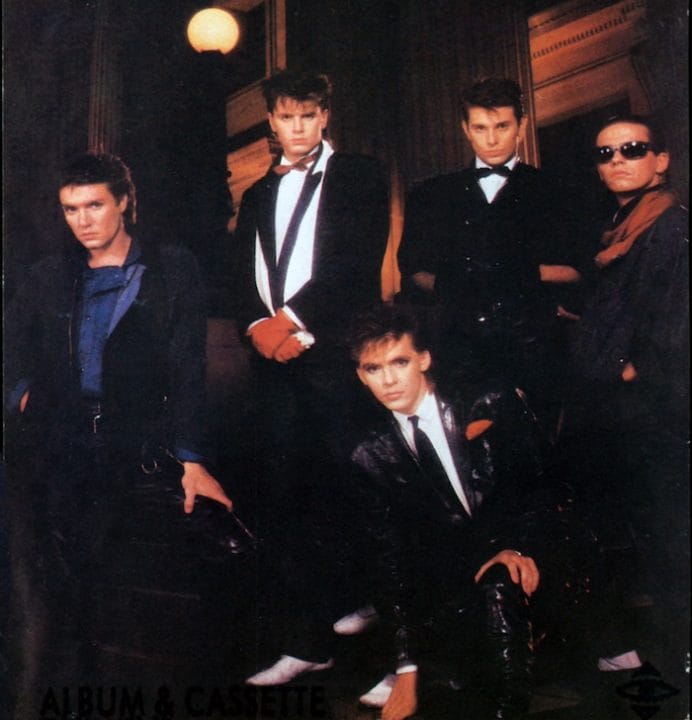
The public were more than accepting and 1983’s Seven And The Ragged Tiger was Duran Duran’s first UK No.1 album. Recorded between studios in France, Australia and the Caribbean, it yielded three singles: Union Of The Snake, New Moon On Monday and a remix of The Reflex by Nile Rodgers, a UK and US No.1. It also paved the way for the Sing Blue Silver Tour, their biggest live outing yet.
Speaking in 1993, John said: “We toured Seven And The Ragged Tiger quite extensively and the success of The Reflex put the band into arenas.
Nick added: “The anxiety involved in the situation we were in had tripled by then because we had the unexpected hysteria of the fans. And this was the biggest shock to all of us.”
Five years later, in 1998, Simon remembered: “We were in danger of becoming a factory, a real money-making machine, instead of a band with some heart and some soul. And so we just did what everybody said we shouldn’t do, and we went off and did two separate projects.”
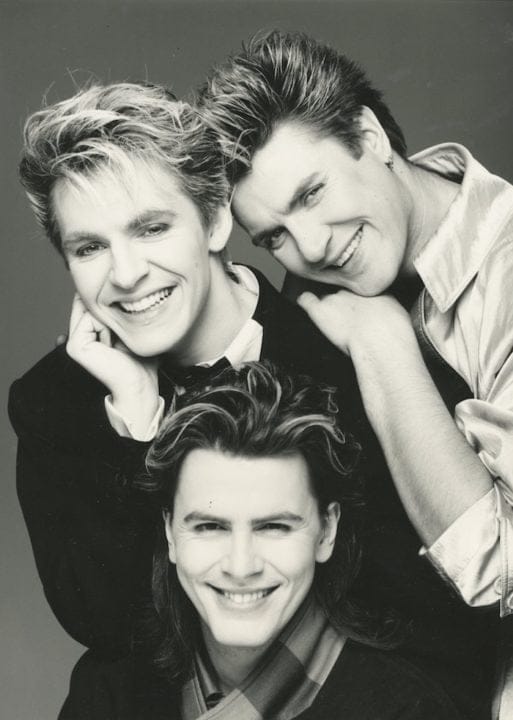
The Wild Boys
After releasing three studio albums, each accompanied by heavy media promotion and lengthy concert tours, the band lost two of its core members: Roger and Andy Taylor.
After their success working with Nile Rodgers to re-imagine The Reflex, and produce The Wild Boys in the same year, Duran Duran turned to him to produce their next LP, Notorious. The band’s first outing as a three piece: Le Bon, Rhodes and John Taylor.
Together they created a definitive Duran Duran album that captured the experimental spirit at the core of the band.
“We wanted to make a fun record really,” Nick said in 1993. “After Andy’s departure, we started getting messages and notes from a guitarist called Warren Cuccurullo. So when we made the Notorious album, Warren arrived and he’s been with us ever since, since 1986.”
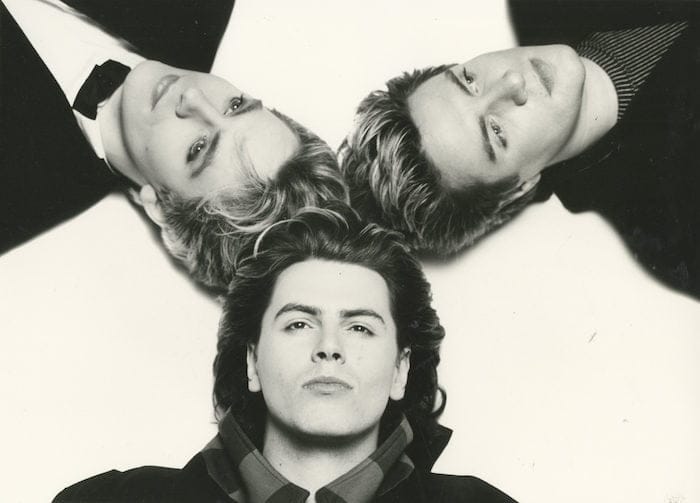
Under Pressure
Warren offered: “I think they were under a lot of pressure and I think that by having me in the group, to fill the guitarist void, and to fill it the way that I envisioned it should be done.”
“The scary thing about Notorious was that it was the first album we’d put out that people didn’t immediately rush out to buy,” John realised. “Up until that point we’d been putting out records and we’d been playing on bigger stages, and it was going the way that it should. And that record came out and all of a sudden it was like it was a turn-around and after having toured it we were sat looking at one another and saying ‘wow what happens now?’”
“I think from 1986, it was a different Duran Duran,” conceded Nick. “We had a different attitude towards recording and a different attitude towards life in general. When we made the Notorious album, we knew it was a one-off sound for us, but then afterwards we wanted to go further out there with Big Thing. It was a bit more electronic and a lot more experimental.”
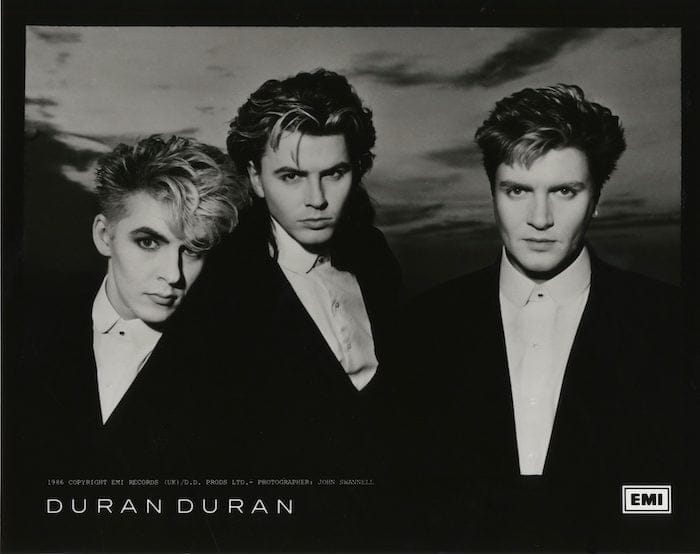
Next Big Thing
Never a group to sit still creatively, Duran Duran expanded to a nine-piece complete with horn section and backing singers for the accompanying tour to the Big Thing album, presenting Duran Duran’s most exploratory work to date at that time.
“With this album, we decided that we wouldn’t put any boundaries on ourselves,” Nick said in 1998. “If we wanted to use a synthesised bass as opposed to a live bass; then we’d do that. If we wanted to use all live instruments with no synthesiser, then we’d do that on another song. We didn’t feel that inhibiting ourselves by various formats would make the album any better; and exploring in different areas would make the album a lot better.”
“With this album we weren’t searching for credibility,” reflected Simon. “We just wanted to make something that we could be proud of. That was our first concern.”
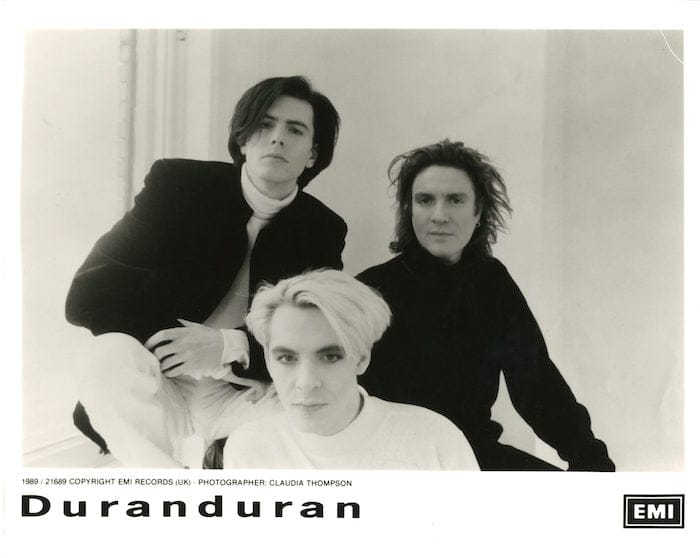
In 1988, John said: “You know you just want to try and blow people’s minds, you want to surprise people. It’s becoming a determination now and it’s a determination that’s equalling the determination that I had when I first started and I know that was enough to get us somewhere. You’ve gotta have it, you’ve got to have a drive because there are too many people out there doing it, you know?”
Duran Duran will reissue these iconic albums via Warner Music from 19 July. To pre-order click here
For more check out our 40 of the best Duran Duran songs – year by year
The post Words & Pictures: Duran Duran dip into the archives appeared first on Classic Pop Magazine.
... Continue Reading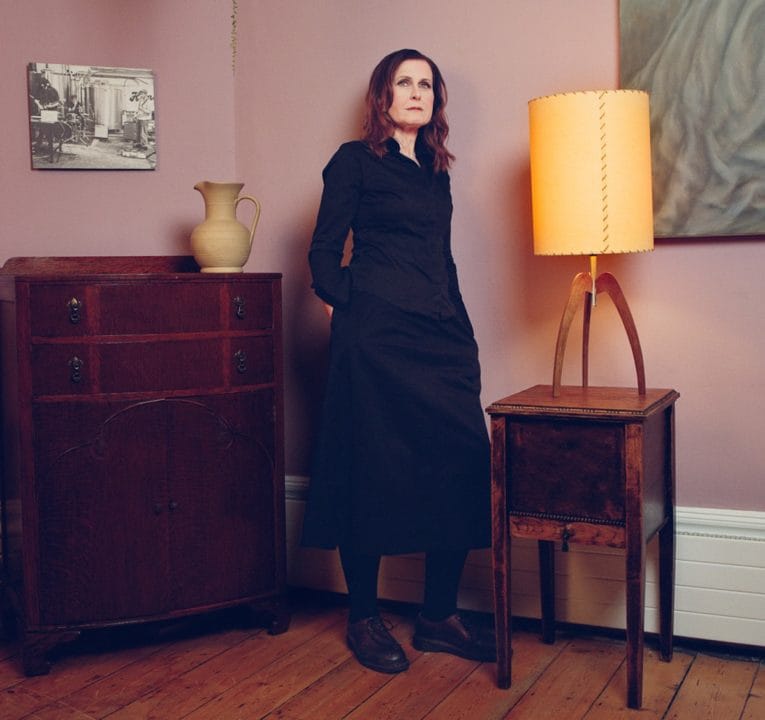
Alison Moyet shares new reworked version of So Am I

Alison Moyet has shared a new reworked version of So Am I from her upcoming album Key, out 4 October.
One of the lesser-discovered gems from Alison’s published works, So Am I features on her 1994 album Essex. Lyrically, a wry and sardonic out-of-body observation of defeat, it is counted among Moyet’s favourites.
The Key version refocuses attention on the song in a collection which aims to unify her back catalogue into a cohesive form for live presentation.
Watch the lyric video below:
Written with Ian Broudie of The Lightning Seeds, So Am I in its new iteration, joins the iconic re-visited All Cried Out and the brand-new song Such Small Ale in previewing the Key album.
A set that contextualises and acknowledges 40 years of original work, gathering together hits and deep cuts alike for an album where no re-packaging was desired. Produced and arranged by Sean McGhee, So Am I is also graced by Suede guitarist Richard Oakes, one of Alison’s other key collaborators in this collection.
No.1 Artist
Key, featuring 16 reworked singles, fan favourites and deep cuts boosted by two new songs, quickly became Amazon’s No.1 selling vinyl, while the world-class talent that propelled Alison to achieve two No.1 albums, six Top 10 singles, three BRIT Awards and a Grammy nomination was put back in the spotlight with a stunning Radio 2 Piano Room session.
In addition to Amazon’s popular exclusive signed orange double-vinyl with an alternate cover, her official store offers a turquoise double-vinyl, a white double-vinyl and a CD, while all bundles add a signed art print. In addition, there are retailer exclusive versions available from The Sound of Vinyl (a limited run signed marble black-and-white double-vinyl), select indie stores (a splatter double-vinyl) and HMV (yellow-and-black smoke double-vinyl).
To pre-order the new album click here.
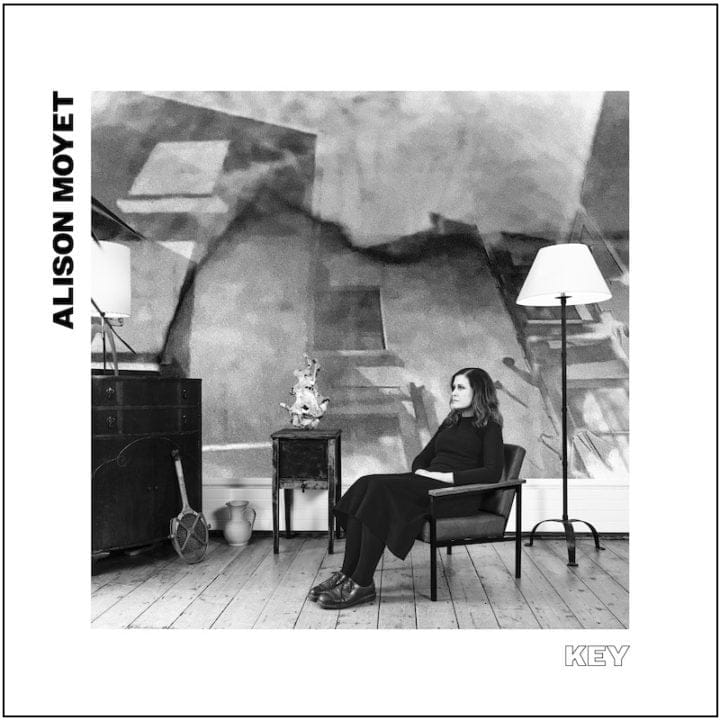
Moyet Moments
Alison recently announced details of a long-awaited world tour which commences in February 2025. Due to overwhelming demand all UK and Ireland dates have already sold out and details of further legs in the USA, Canada, New Zealand and Australia will be announced in the coming weeks.
In addition to the launch of Key and world tour, the singer has been further reflecting on her story with the hit podcast series 40 Moyet Moments, in which she looks back upon landmark moments in her career to date during in-depth conversations with Steve Coats-Dennis. Interest has been immense, with No.1 podcast chart positions achieved on Apple Podcasts UK (Music and Music Interviews), Spotify UK (Music), Apple Podcasts Australia (Music Interviews) and Apple Podcasts Ireland(Music) plus strong placings in key charts in theUSA and Canada. 40 Moyet Moments is available here.
Read more: Alison Moyet the complete album guide
The post Alison Moyet shares new reworked version of So Am I appeared first on Classic Pop Magazine.
... Continue Reading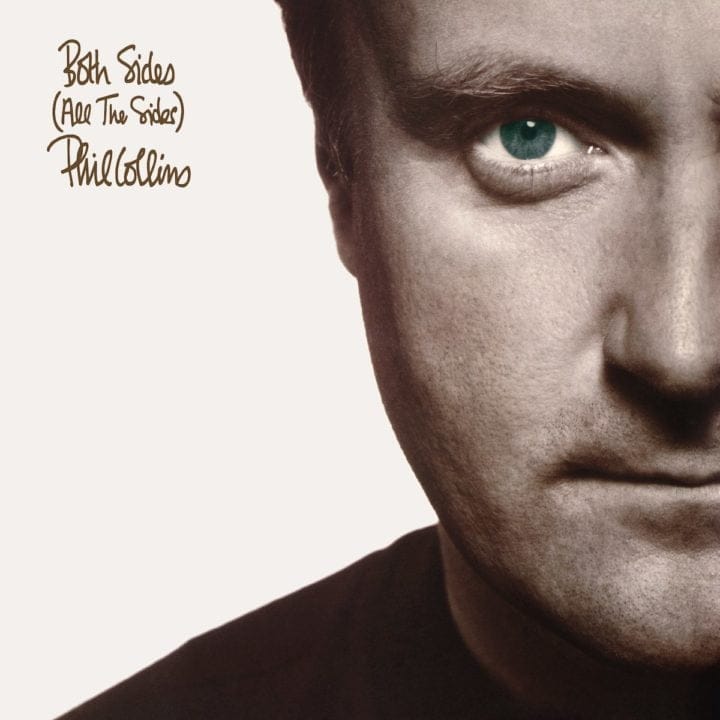
Phil Collins’ Both Sides to be reissued as a 5LP boxset

In celebration of the 30th anniversary of Phil Collins’ fifth solo studio album Both Sides, it is to be reissued as a special edition 5LP boxset.
This deluxe edition contains the remastered full original album, cut at half-speed by Miles Showell at Abbey Road Studios, and is a compendium of early demo tracks from the recording of the album as well as rarities from the singles originally released on the album – Both Sides Of The Story, Everyday and We Wait And We Wonder.
Both Sides (All The Sides) brings this full collection together with live tracks from the era, such as Can’t Turn Back The Years, Both Sides Of The Story taken from Collins’ MTV Unplugged performance, Doesn’t Anybody Stay Together Anymore and more, as one release for the first time on vinyl. The set is housed in a slipcase with picture sleeves and a 16-page booklet containing newly-written and extensive liner notes by esteemed journalist Michael Hann.
Proclaimed by Collins as his most personal album to that point in his career, Both Sides originally released in 1993, is Phil Collins’ fifth album and was written, performed and produced all by Collins himself at his home studio in just six weeks.
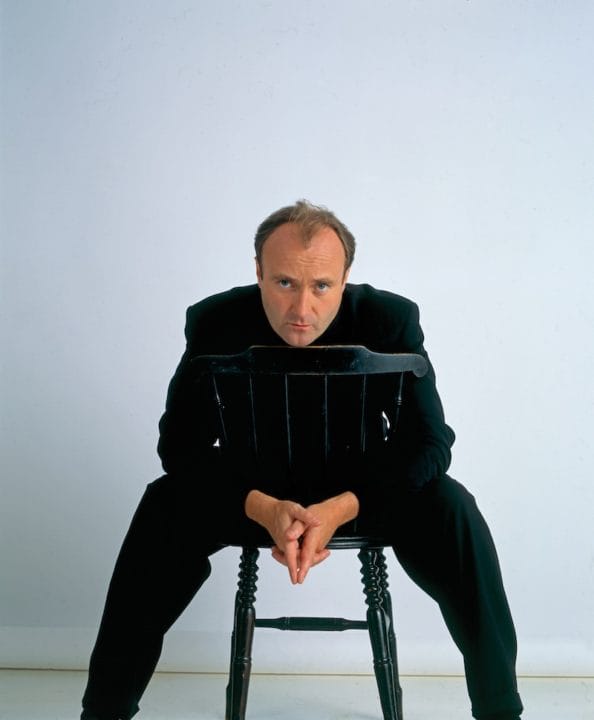
Both Sides of the Story
In a 2016 interview with The Guardian newspaper, Collins named it as his “favourite album from a songwriting and creative perspective”, going on to reveal how “… the songs just streamed out of me, and as a writer, that’s the kind of thing that you dream of.”
Upon its original release, the album reached No.1 in the UK and throughout Europe as well as No.13 in the US, it has gone on to be a global multi-platinum selling album.
As written by Michael Hann in his notes, “Time has magnified its virtues, and perspective has amplified its truths. Both Sides may not have been the monster hit its predecessors were, but it might be the most important record in the Phil Collins discography.”
In other Collins news, Live From the Board: Official Bootleg, a limited-edition 10″ vinyl will be released for Black Friday Record Store Day (29 November 2024).
A four track EP that was originally released in 1995 with songs recorded on the Both Sides tour in 1994 under the artist name Phil Collins & The Indescribable Din and features the tracks Sussudio, Easy Lover, Separate Lives and My Girl.
 Both Sides (All The Sides) Tracklisting
Both Sides (All The Sides) Tracklisting
LP 1 Side A – Original Album
Both Sides of the Story
Can’t Turn Back the Years
Everyday
LP 1 Side B – Original Album
I’ve Forgotten Everything
We’re Sons of Our Fathers
Can’t Find My Way
LP 2 Side C – Original Album
Survivors
We Fly So Close
There’s a Place for Us
LP 2 Side D – Original Album
We Wait and We Wonder
Please Come Out Tonight
LP 3 Side E
Can’t Find My Way (Demo)
Hero (Demo)
Both Sides of the Demo (Early Demo)
Everyday (Early Demo)
LP 3 Side F
Don’t Call Me Ashley
Rad Dudeski
For a Friend
I’ve Been Trying
LP 4 Side G
Both Sides of the Story (Live)
Can’t Turn Back the Years (Live)
Survivors (Live)
LP 4 Side H
Everyday (Live)
We Wait and We Wonder (Live)
Both Sides of the Story (MTV Europe Unplugged)
LP 5 Side I
Hang in Long Enough (Live)
Hand in Hand (Live)
Doesn’t Anybody Stay Together Anymore (Live)
LP 5 Side J
Always (Live)
Stevies Blues (There’s a Place for Us Instrumental)
Take Me With You
Released on 20 September, Both Sides (All The Sides) can be pre-ordered here
Want more Classic Pop? Sign up for our newsletter
The post Phil Collins’ Both Sides to be reissued as a 5LP boxset appeared first on Classic Pop Magazine.
... Continue Reading
